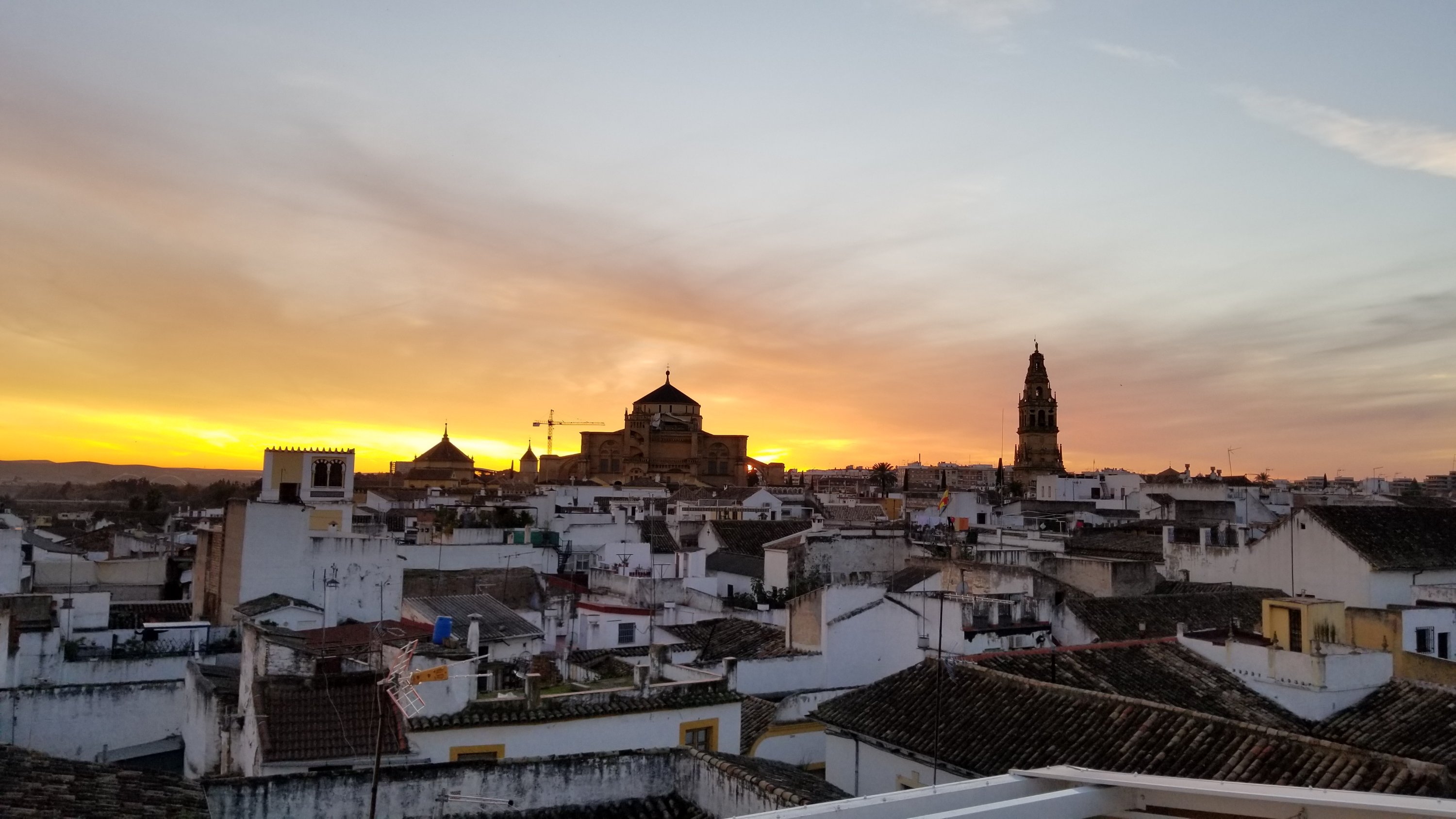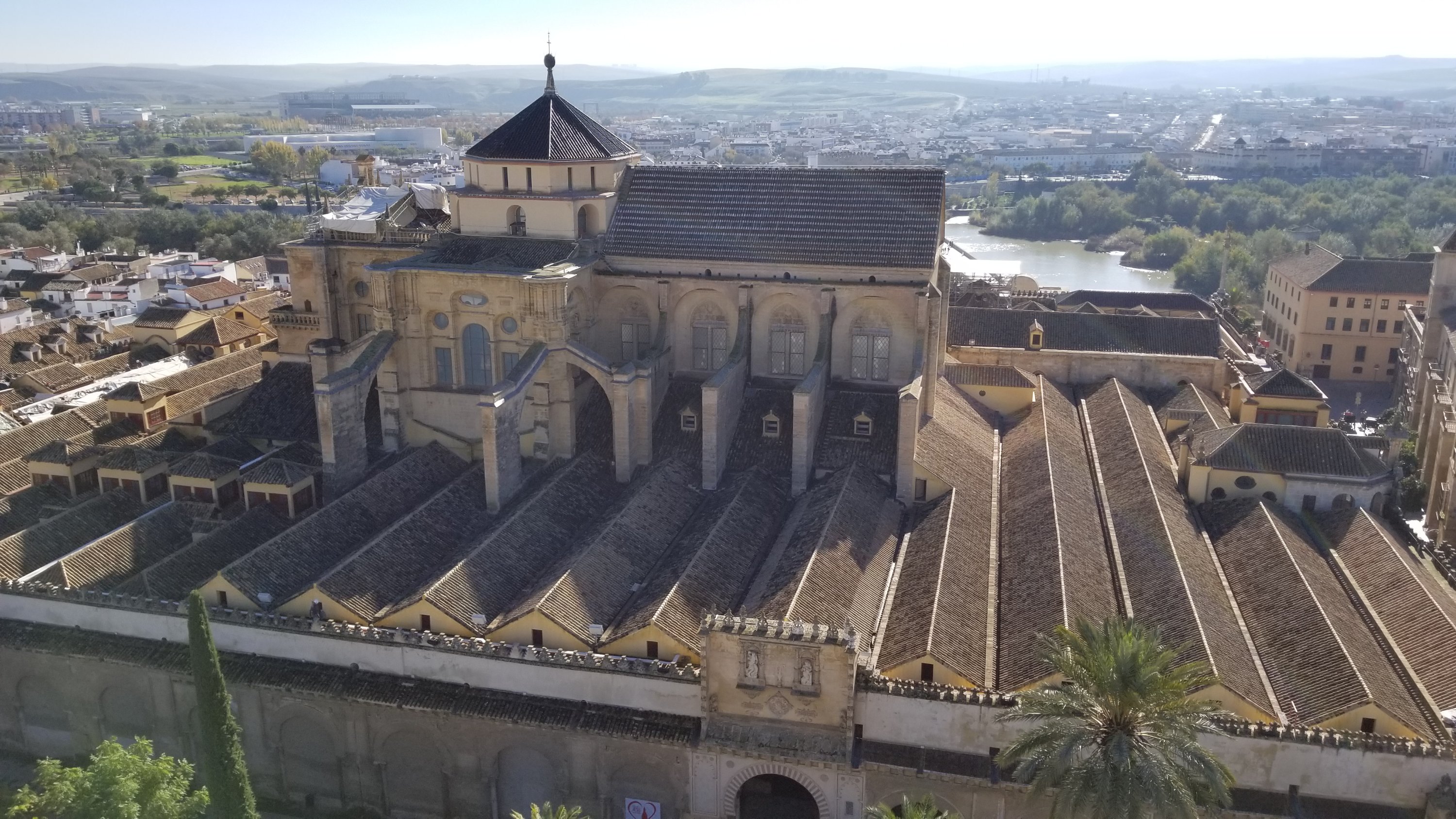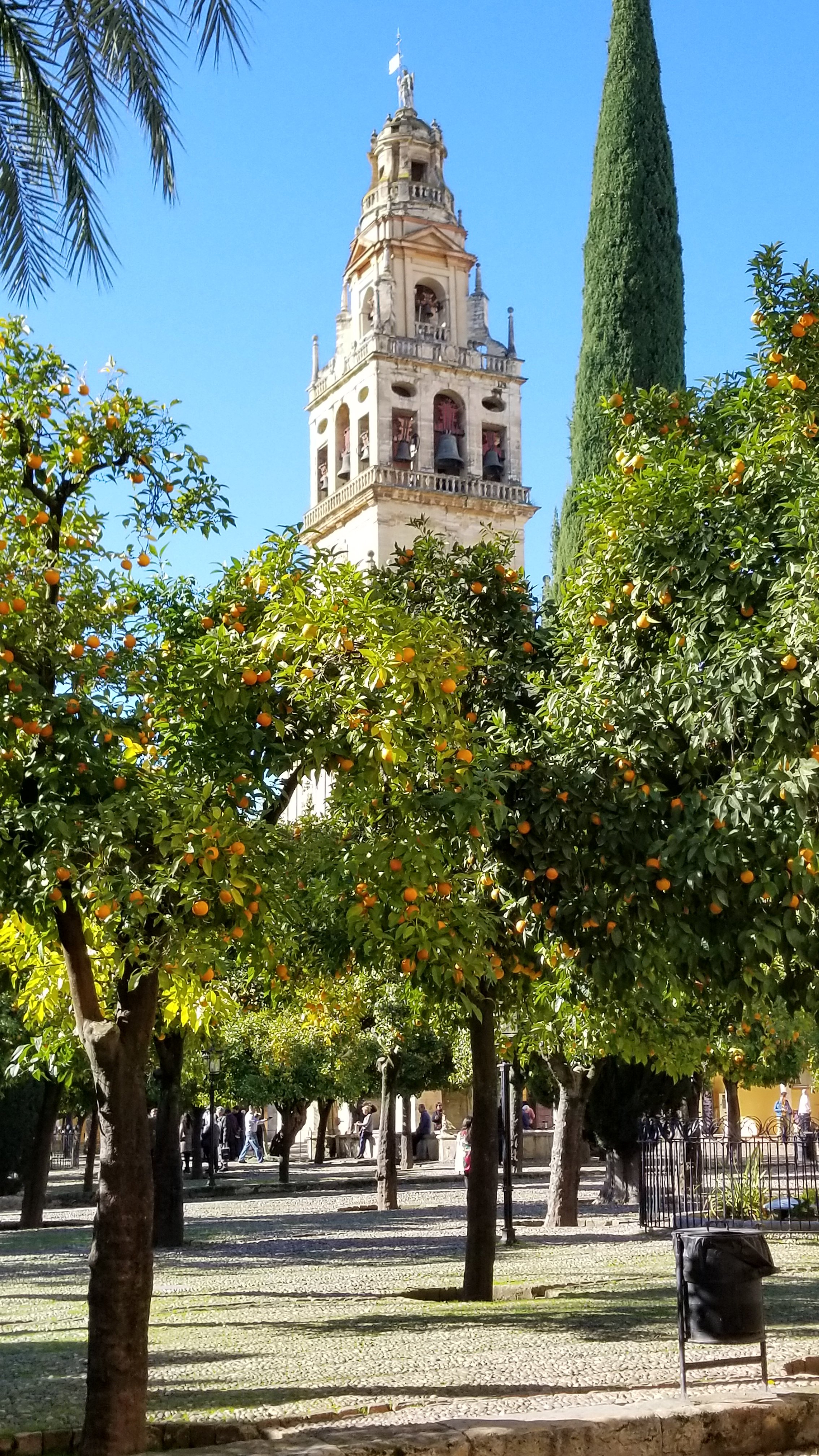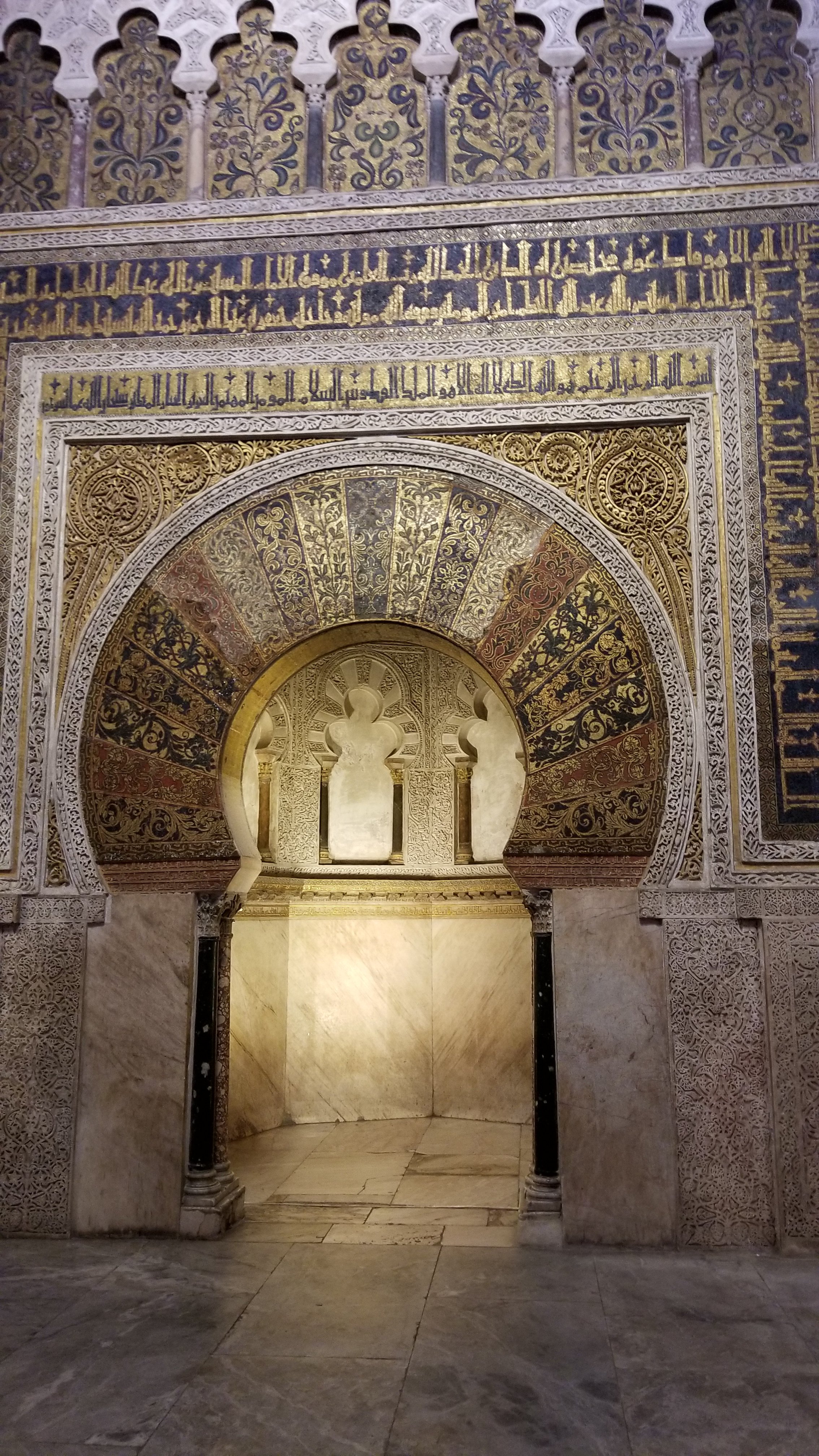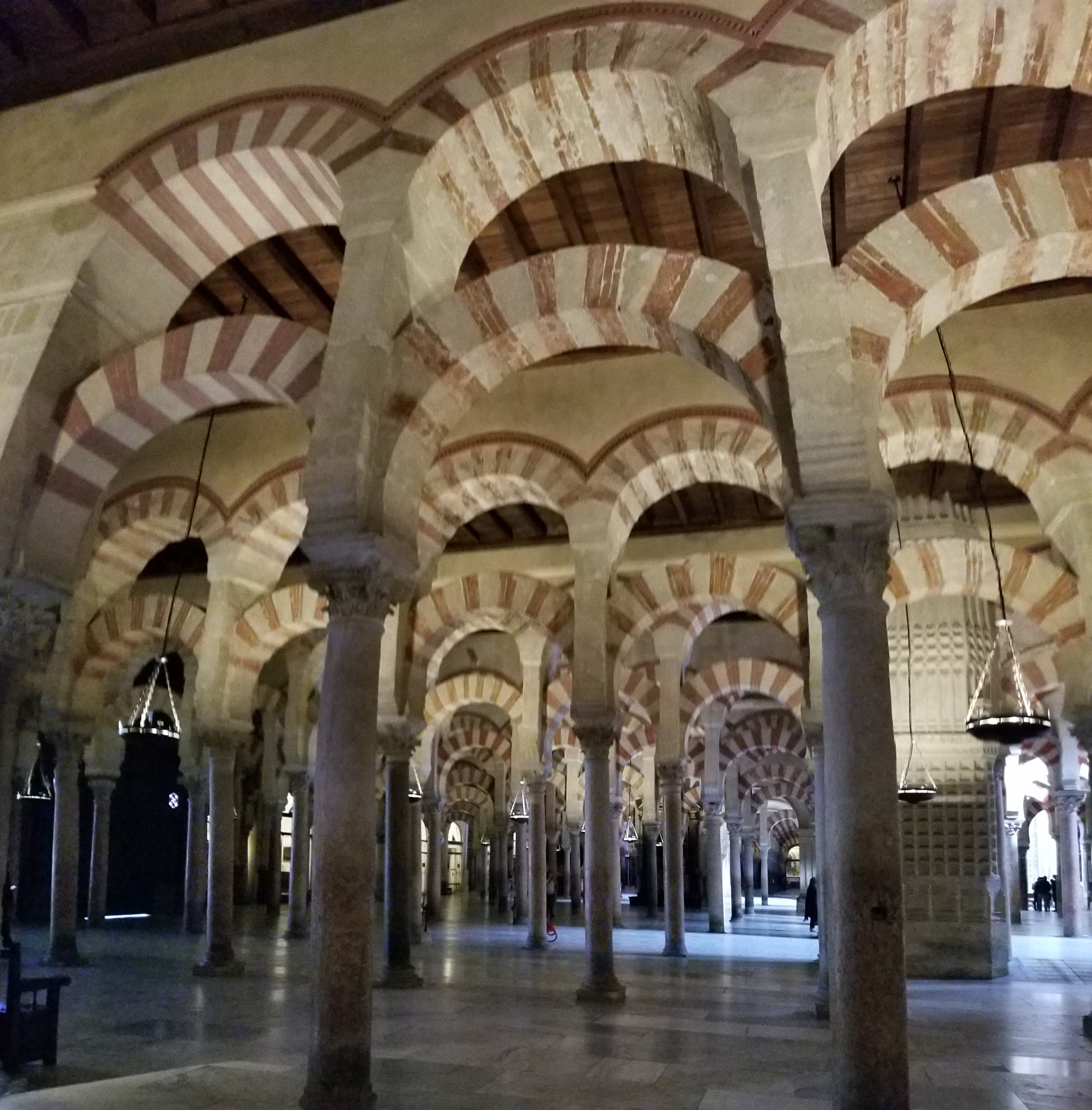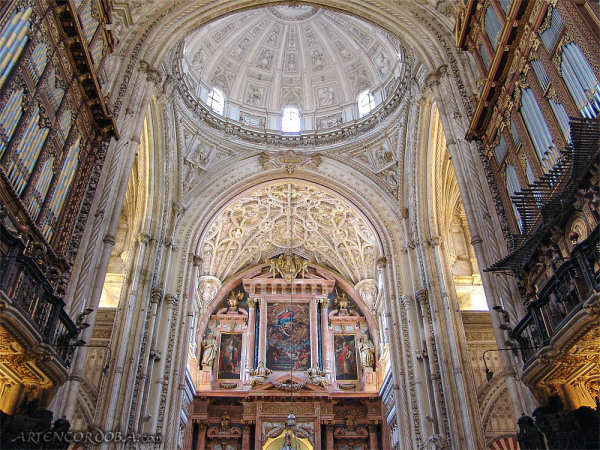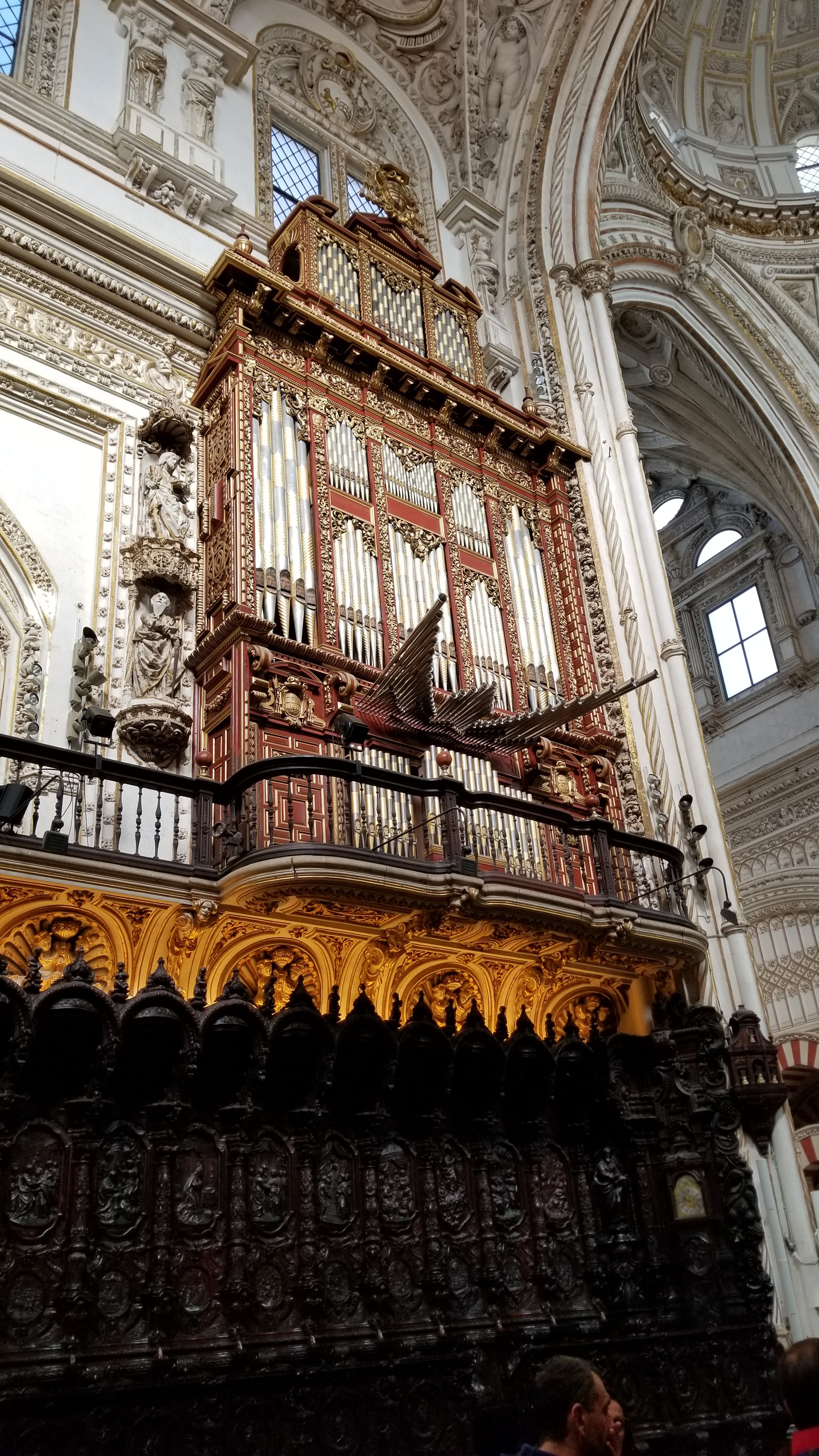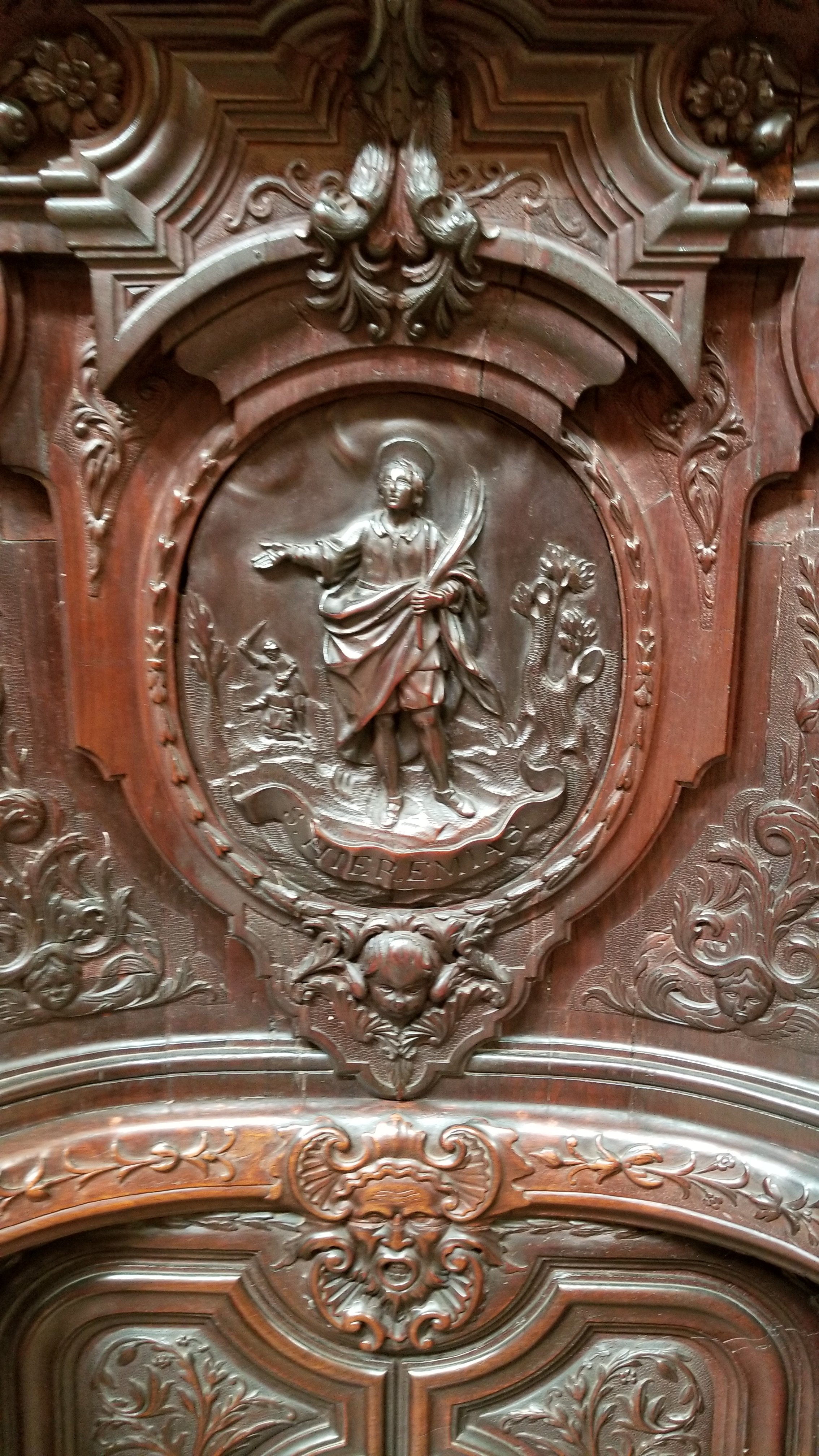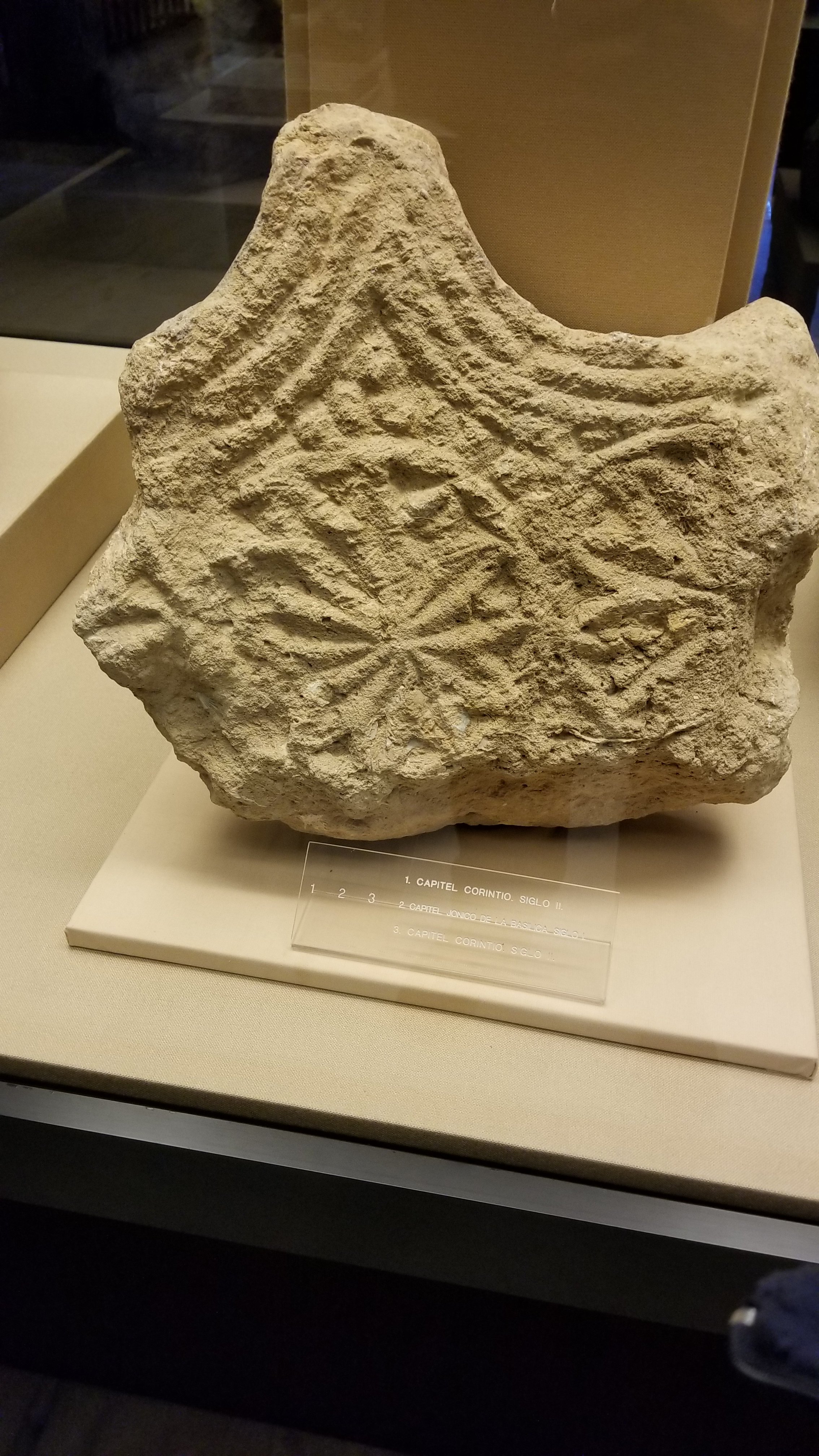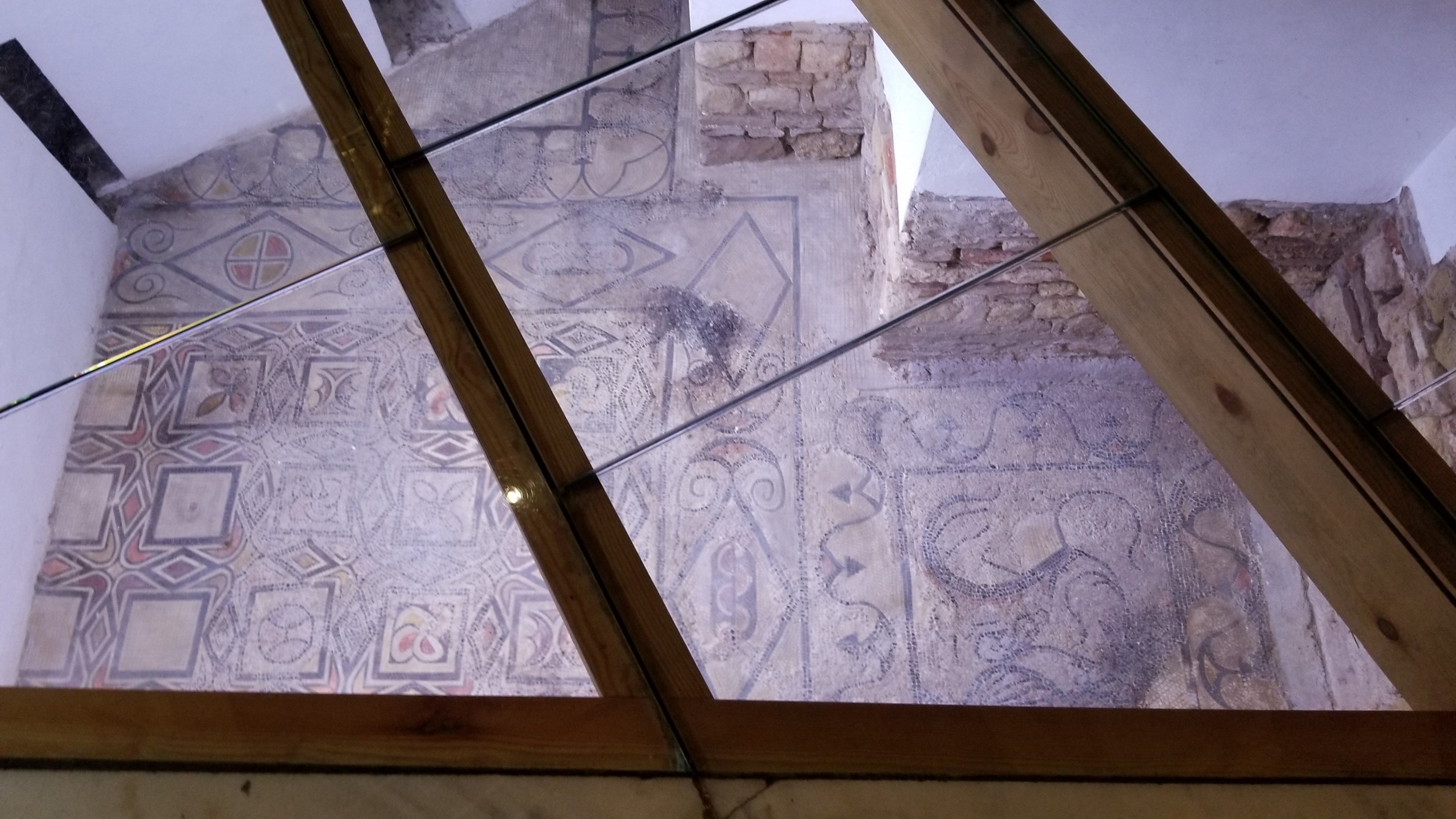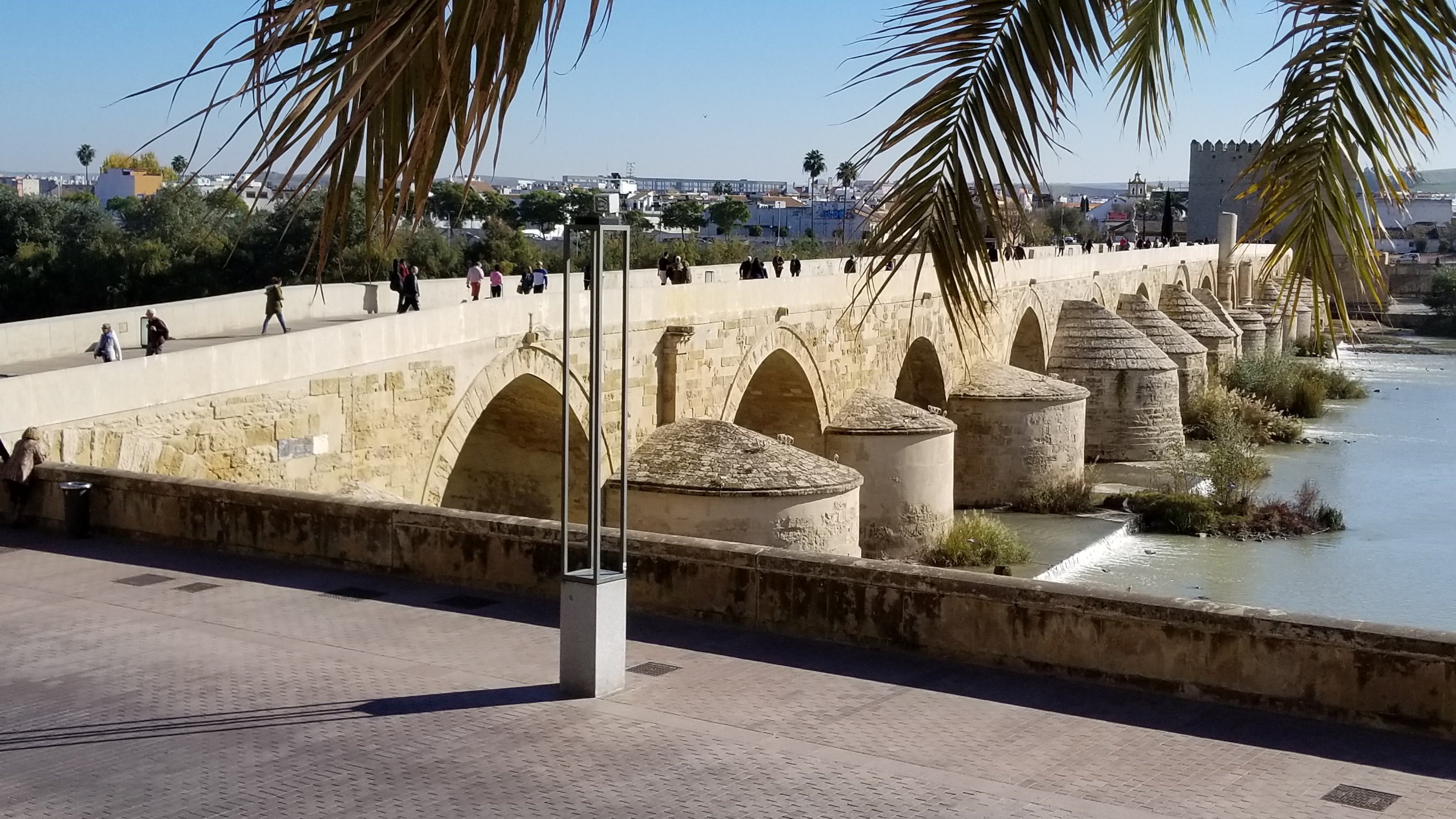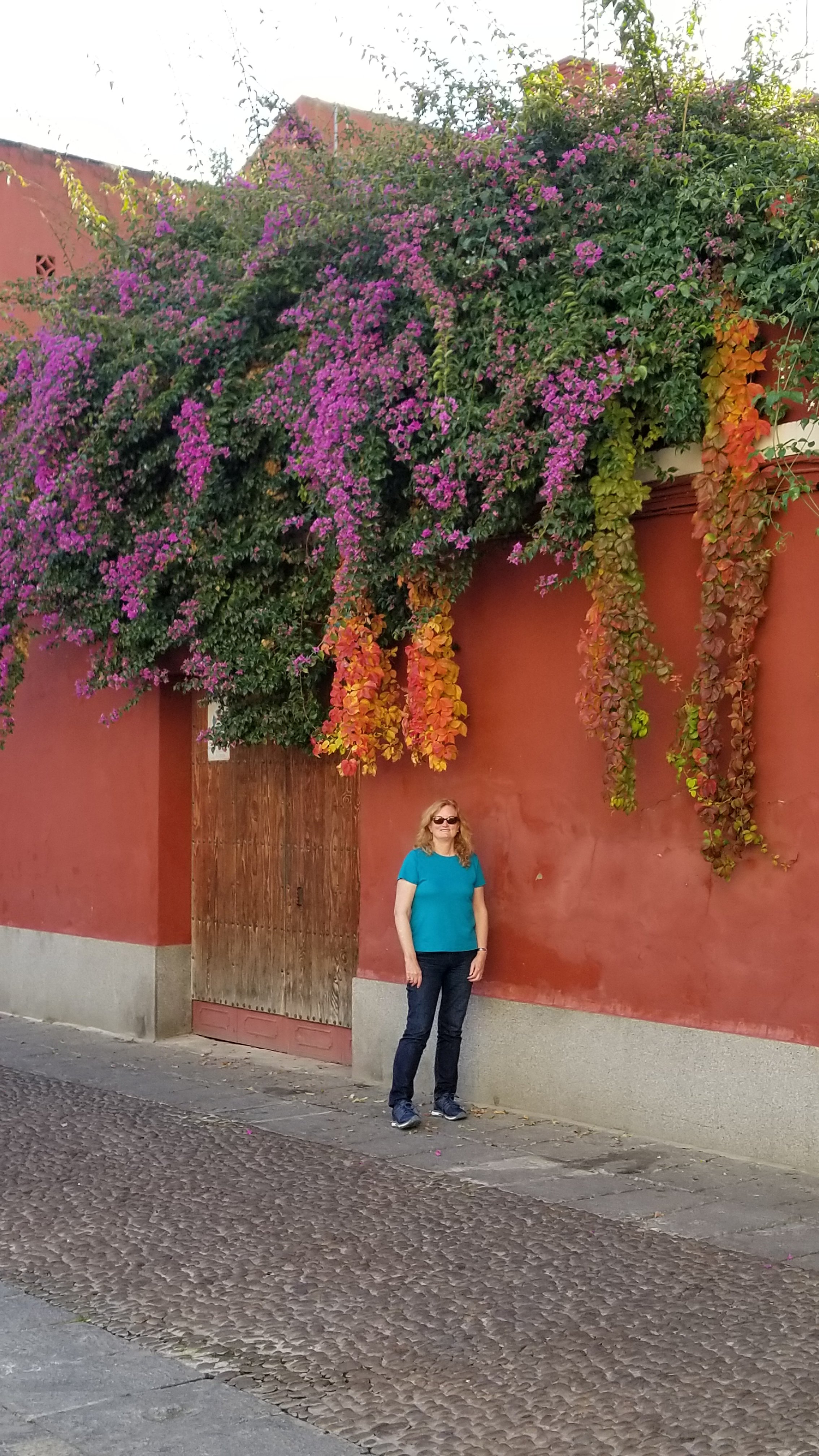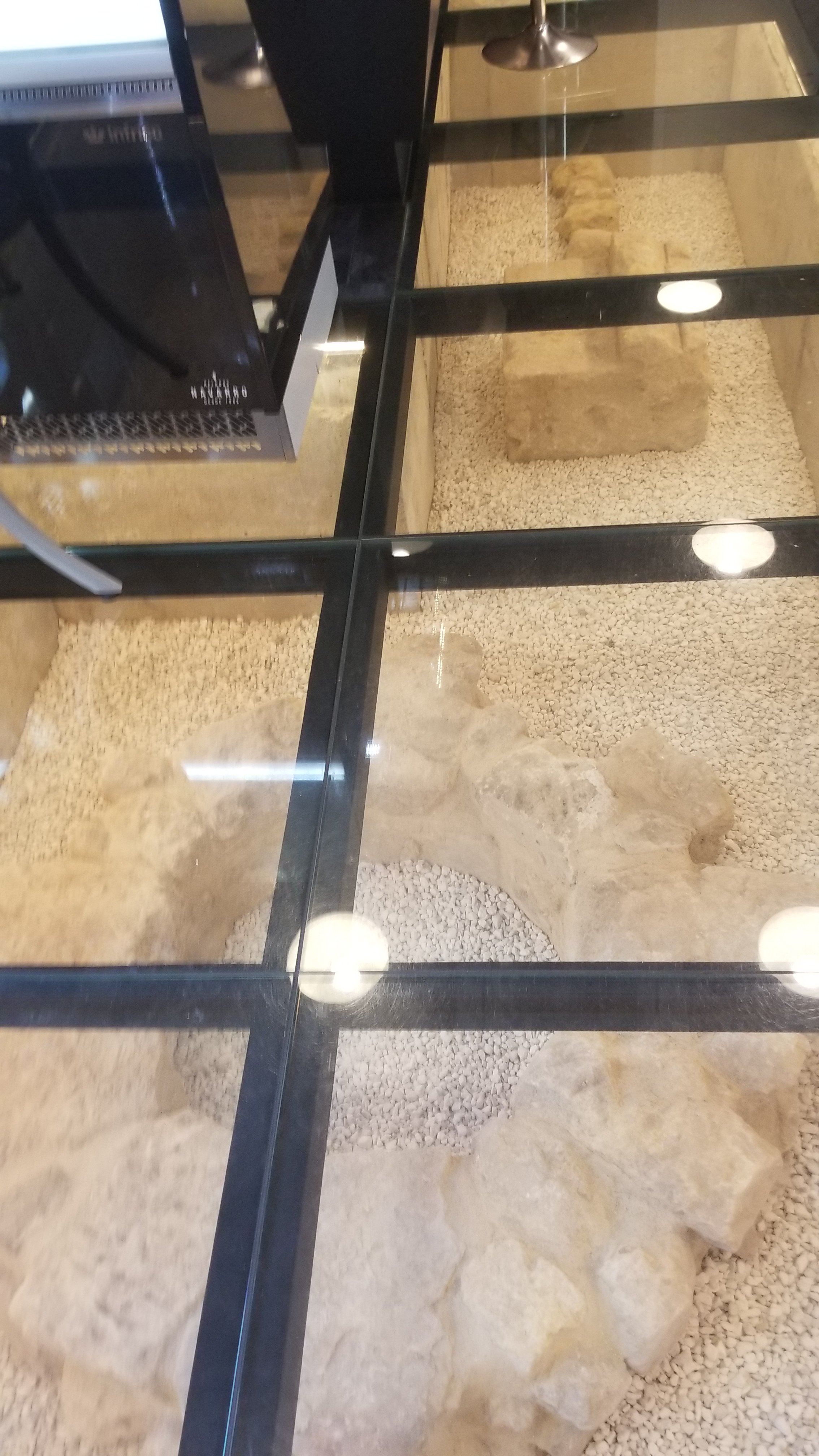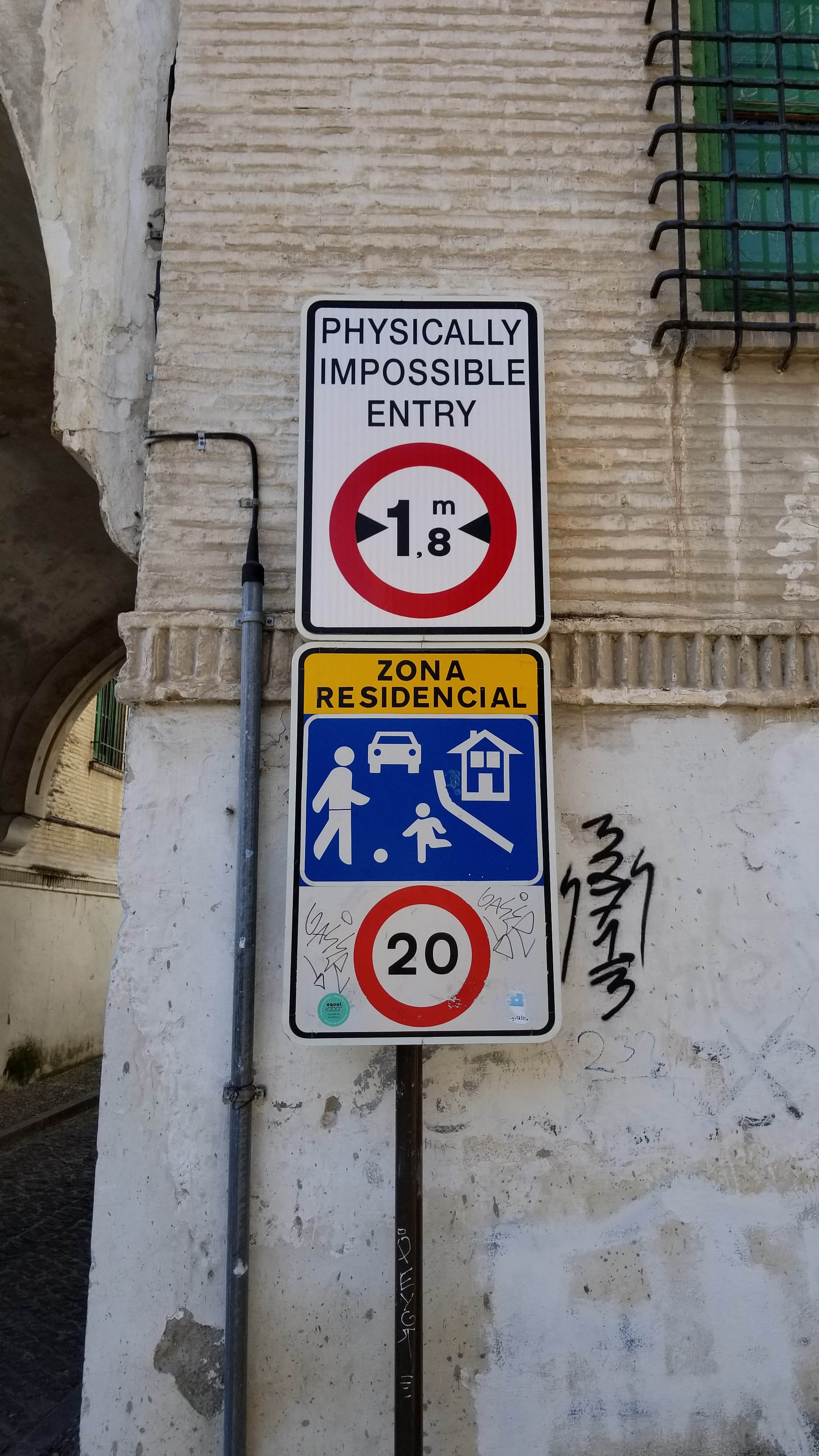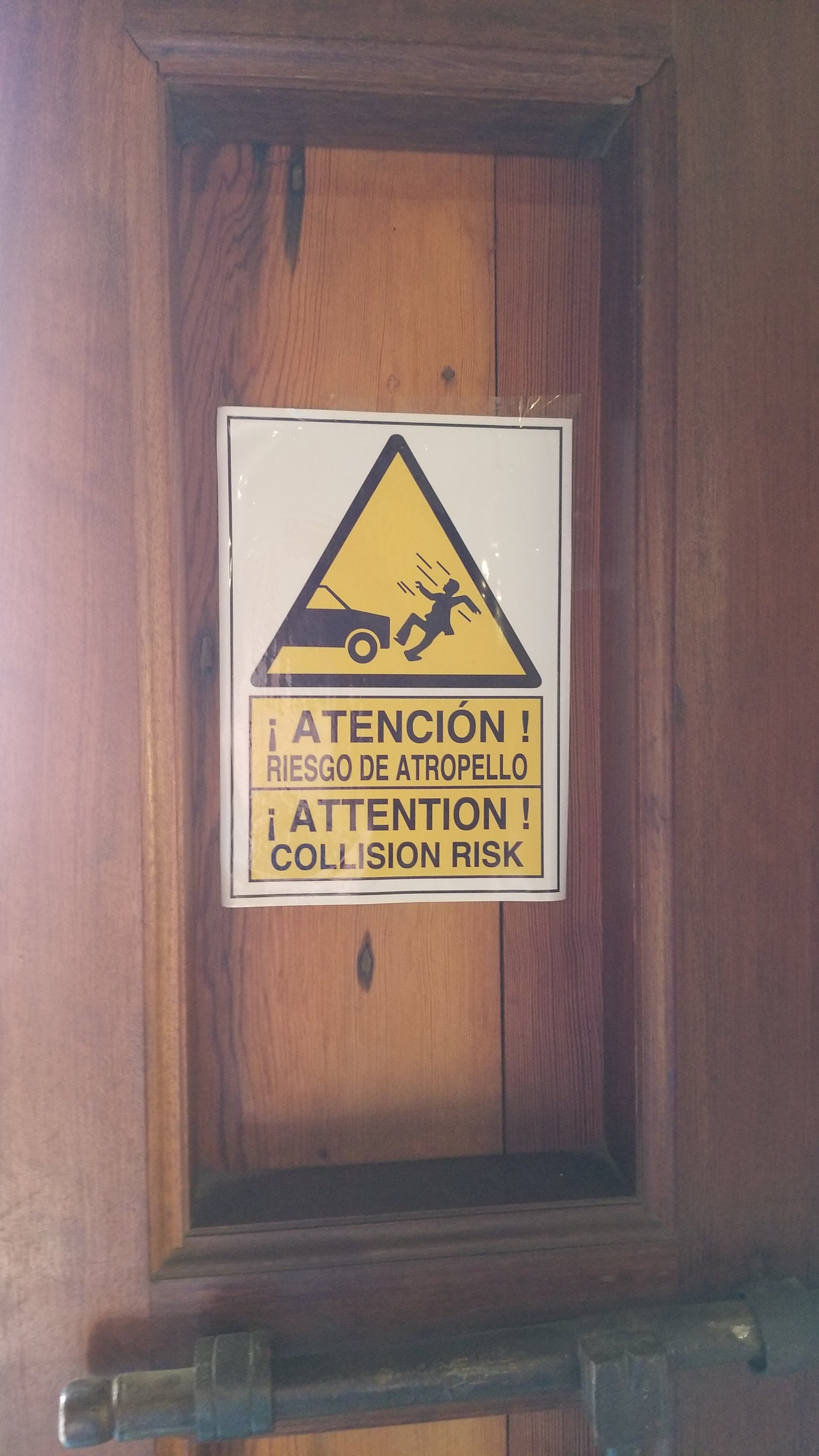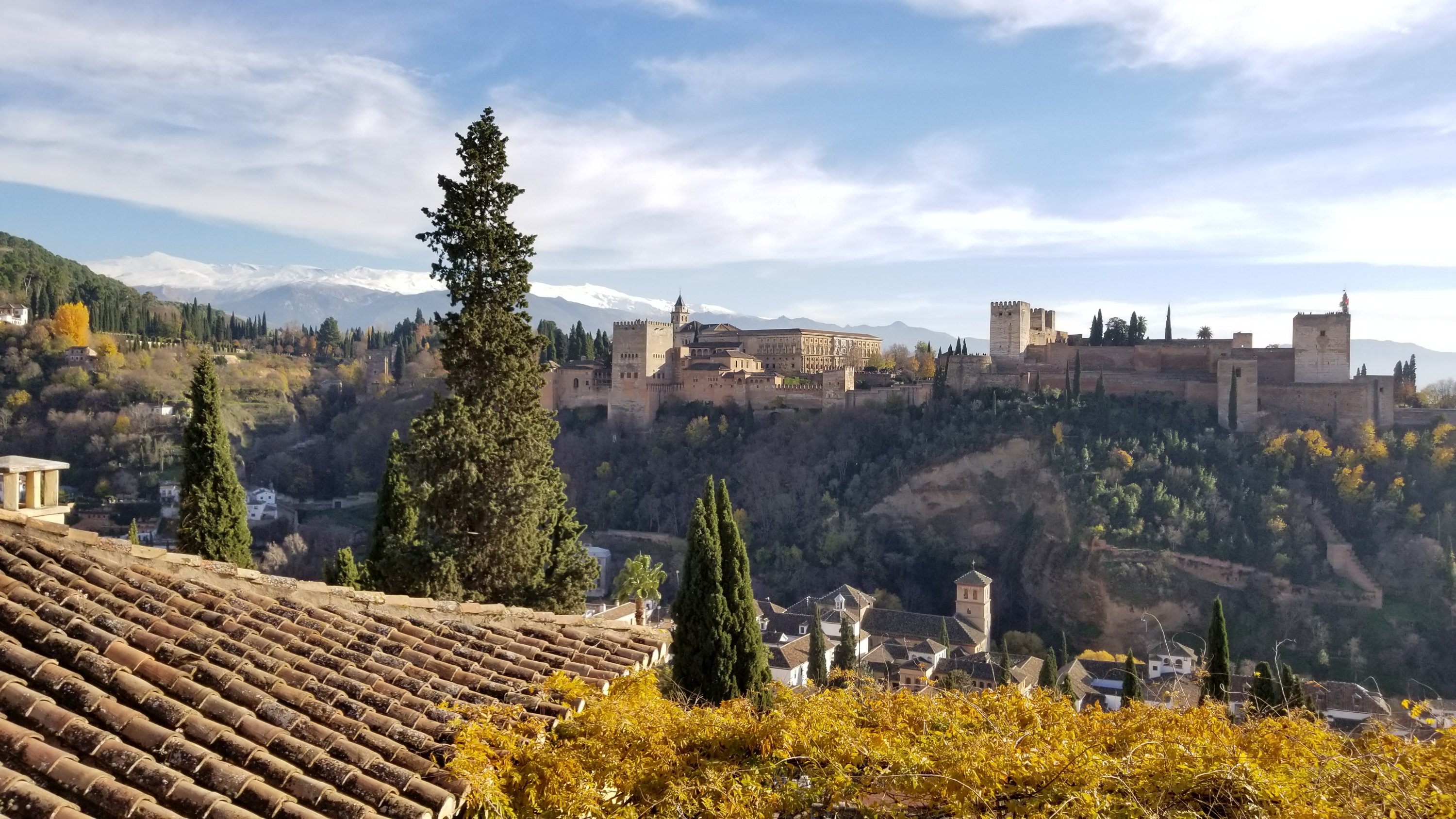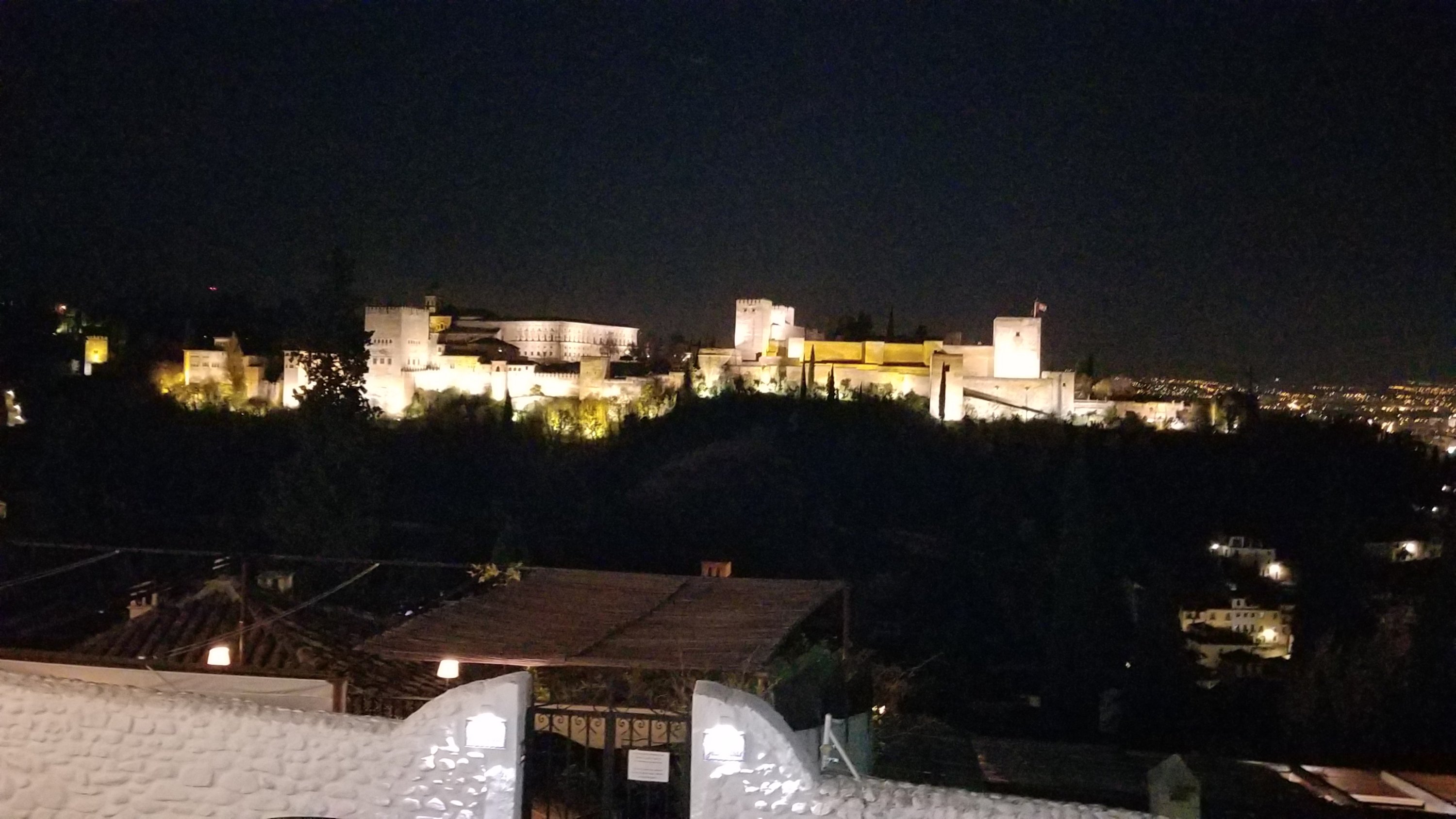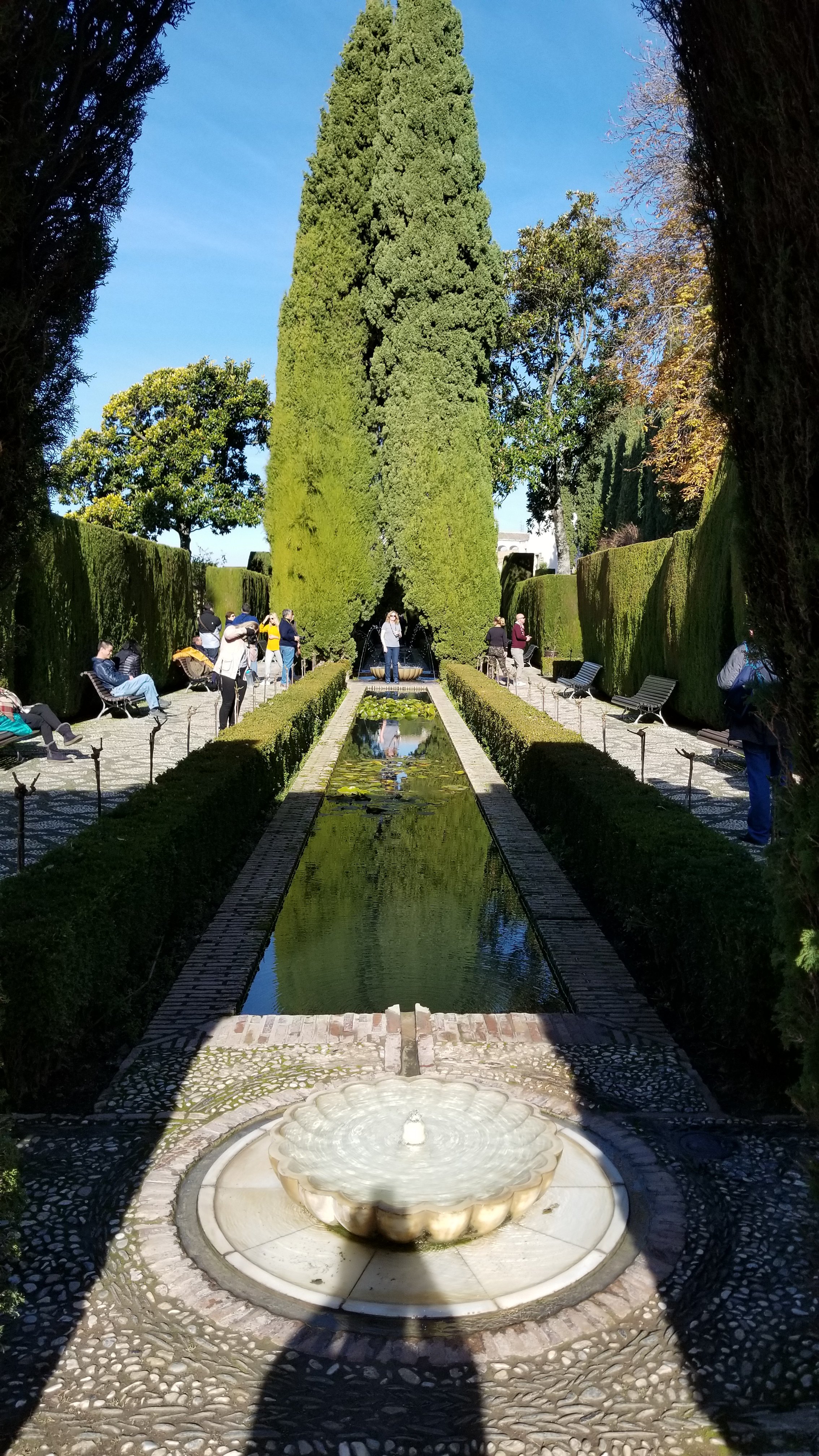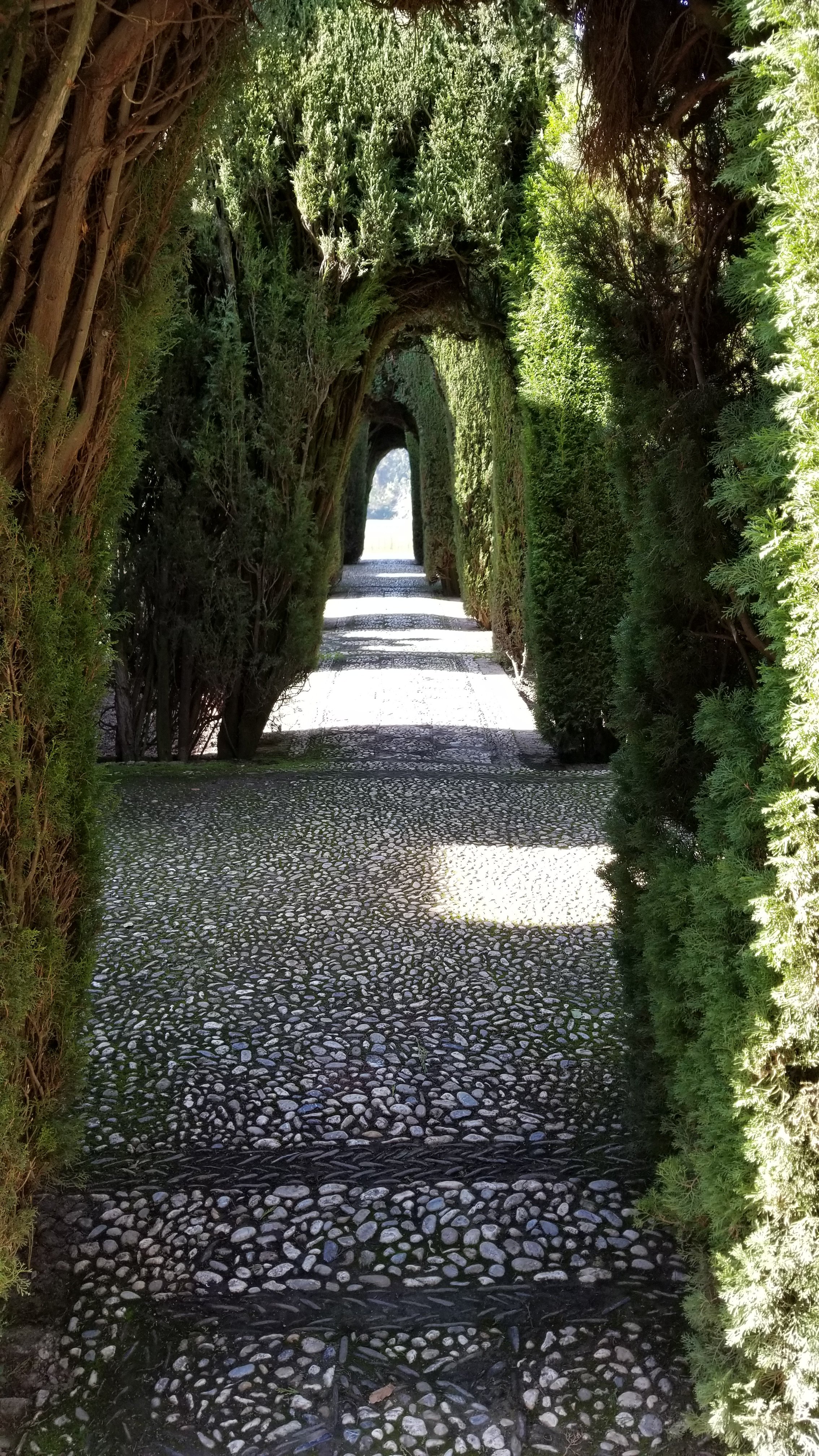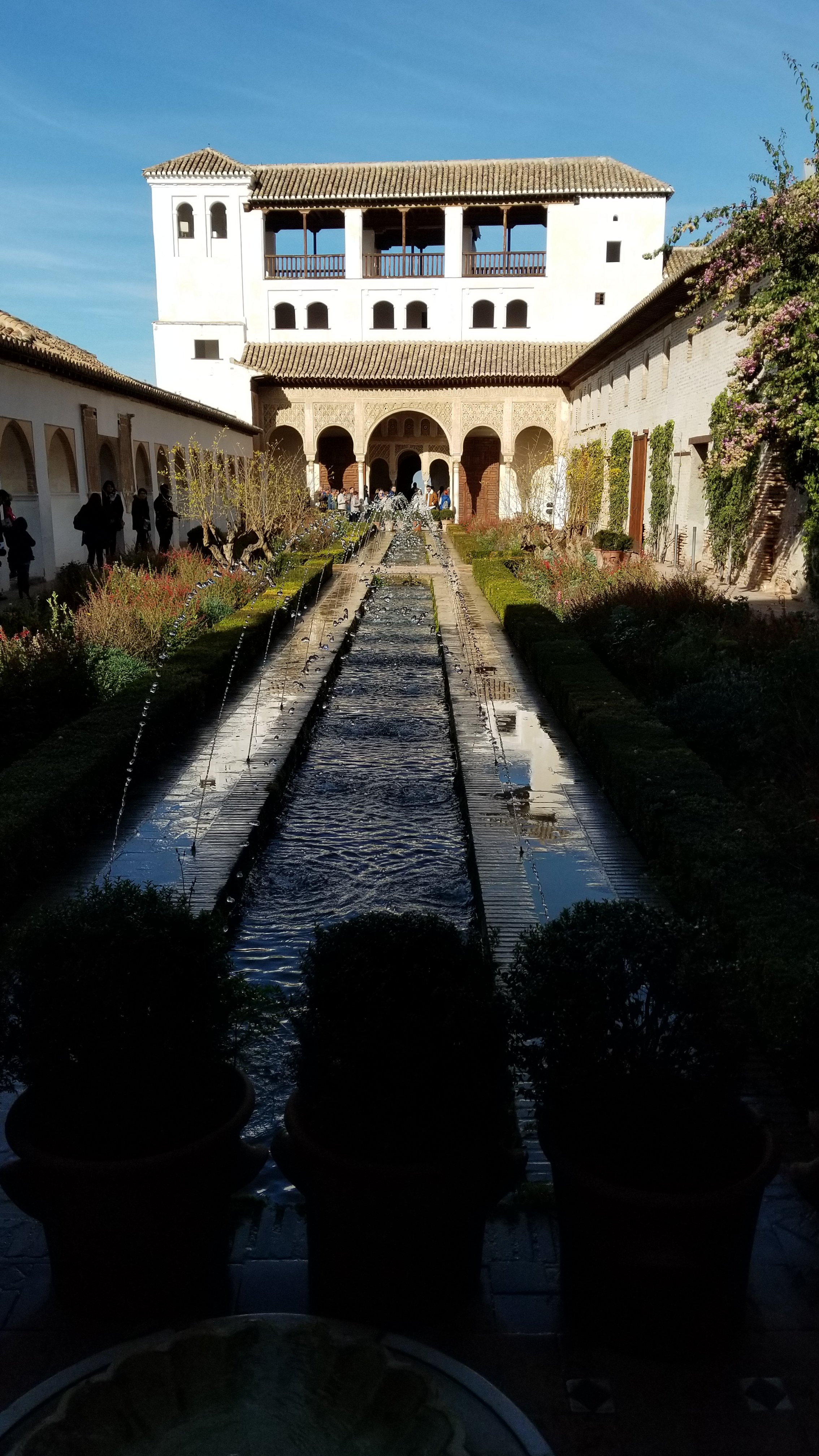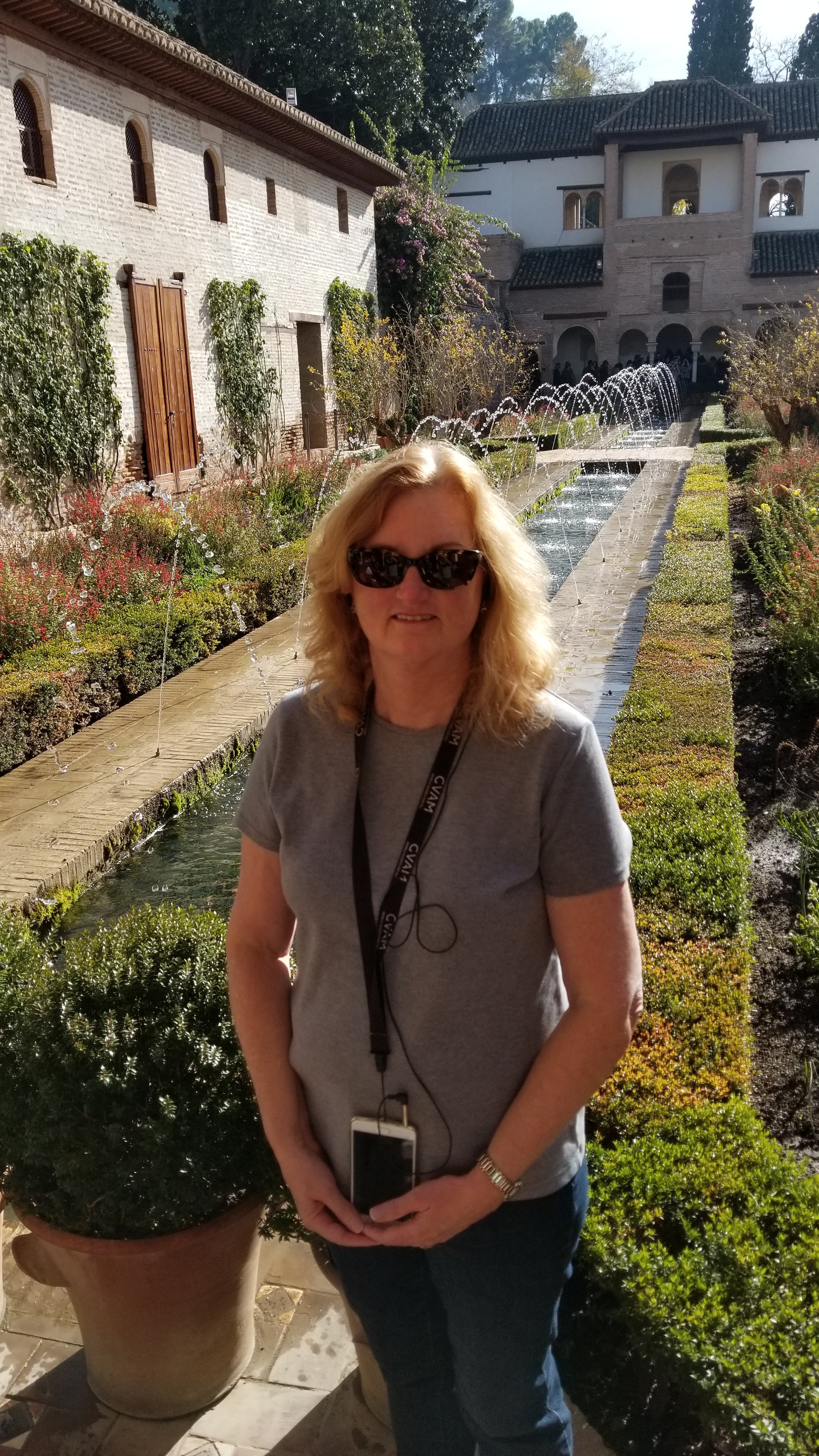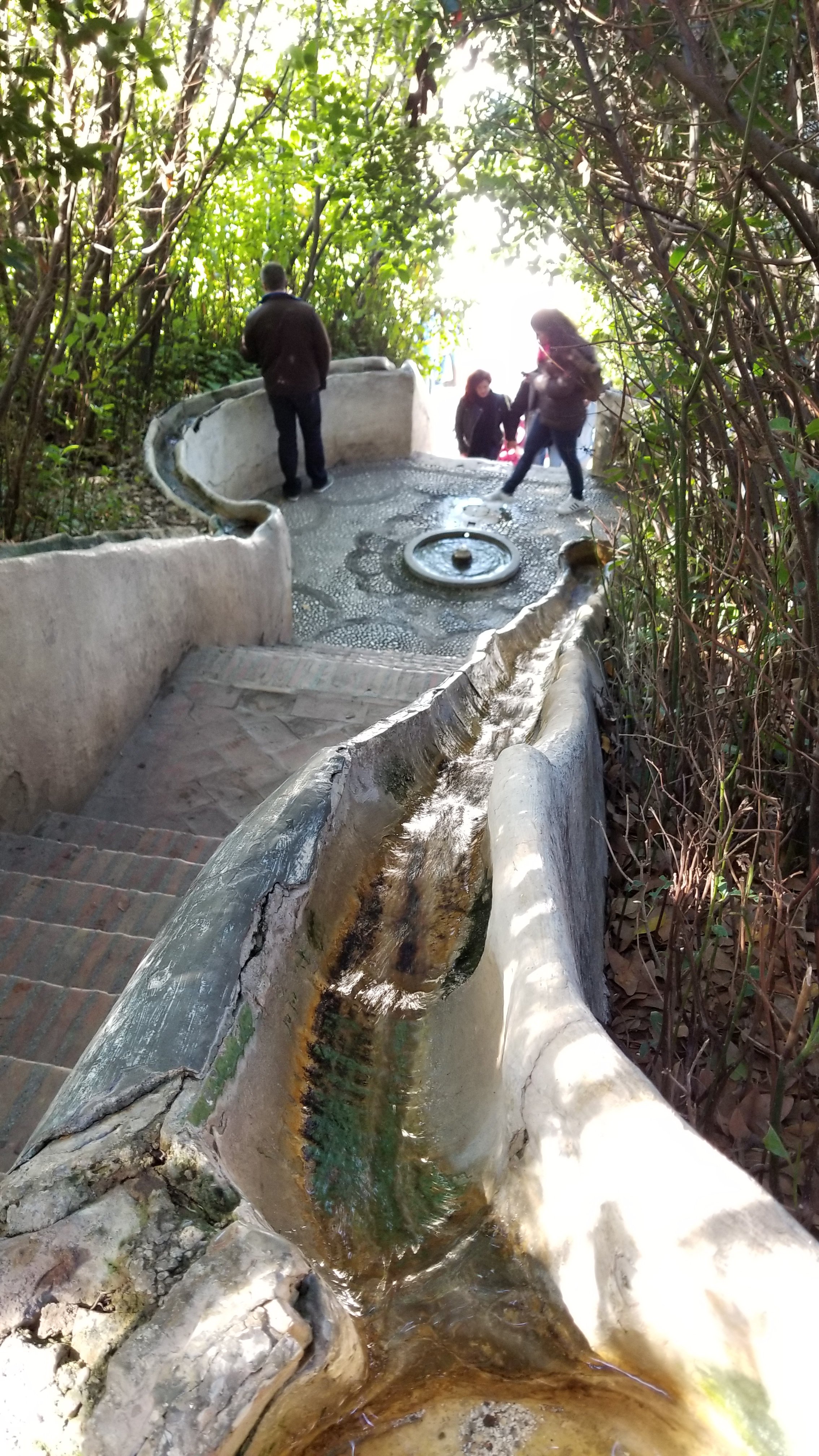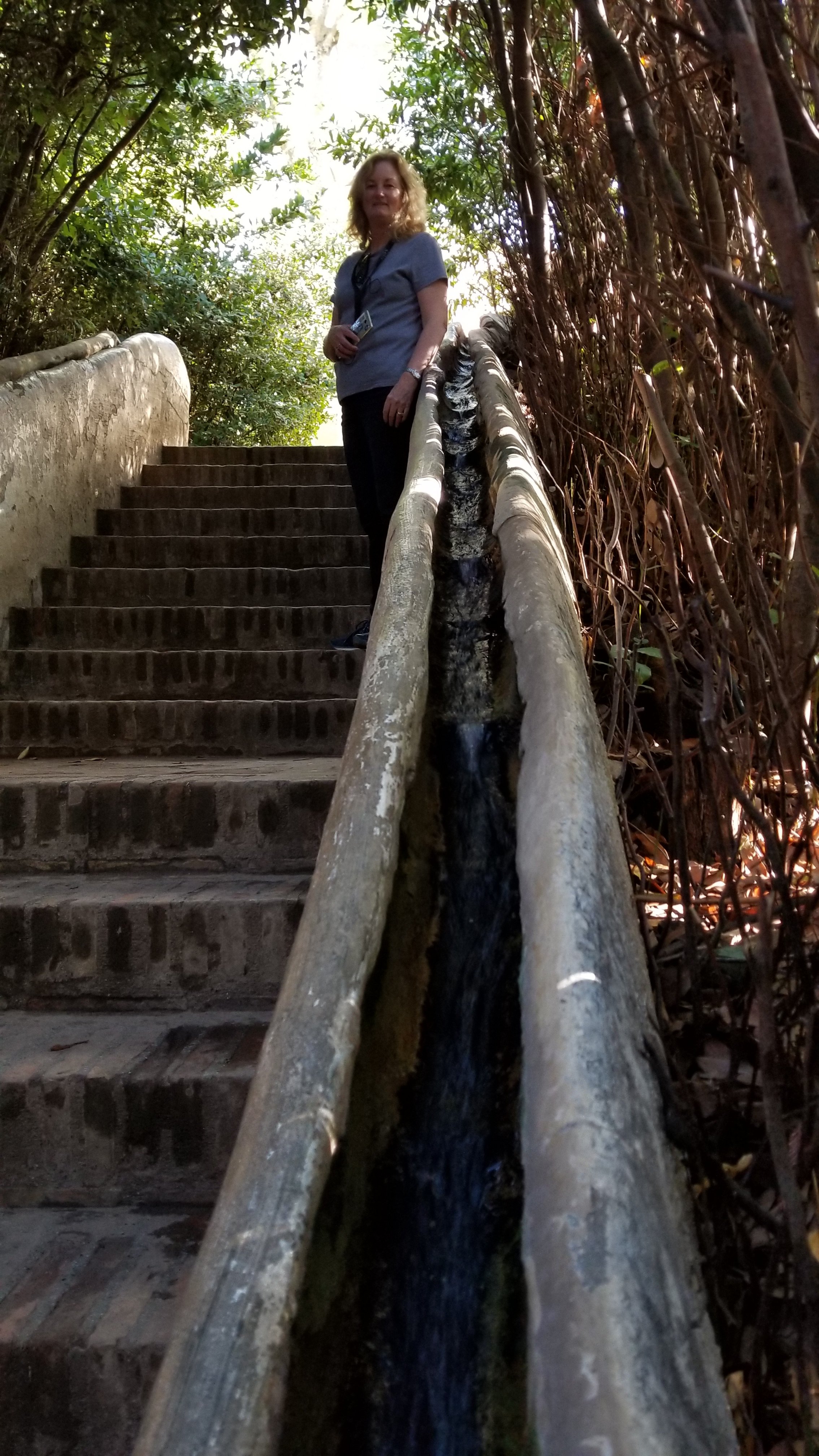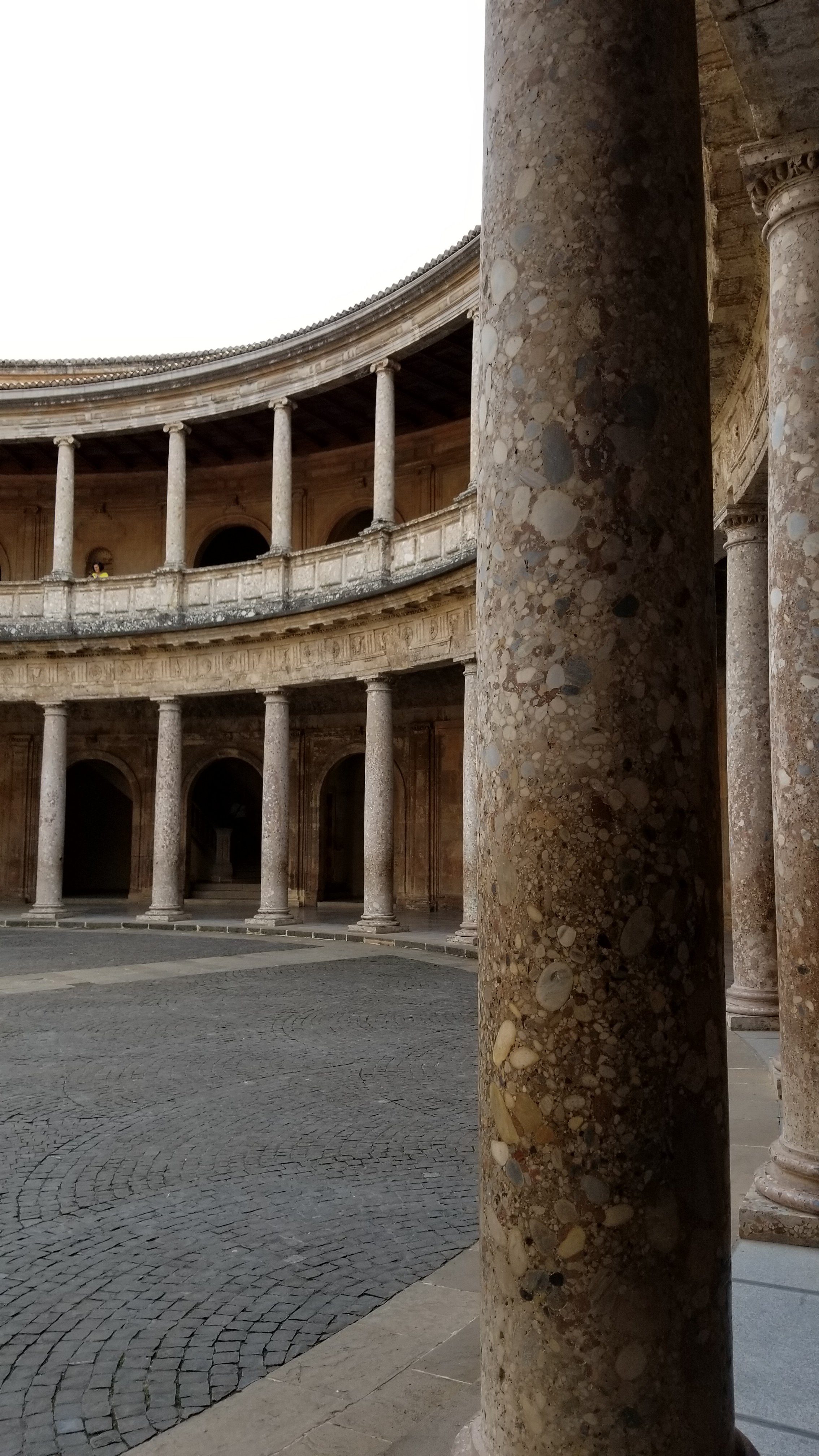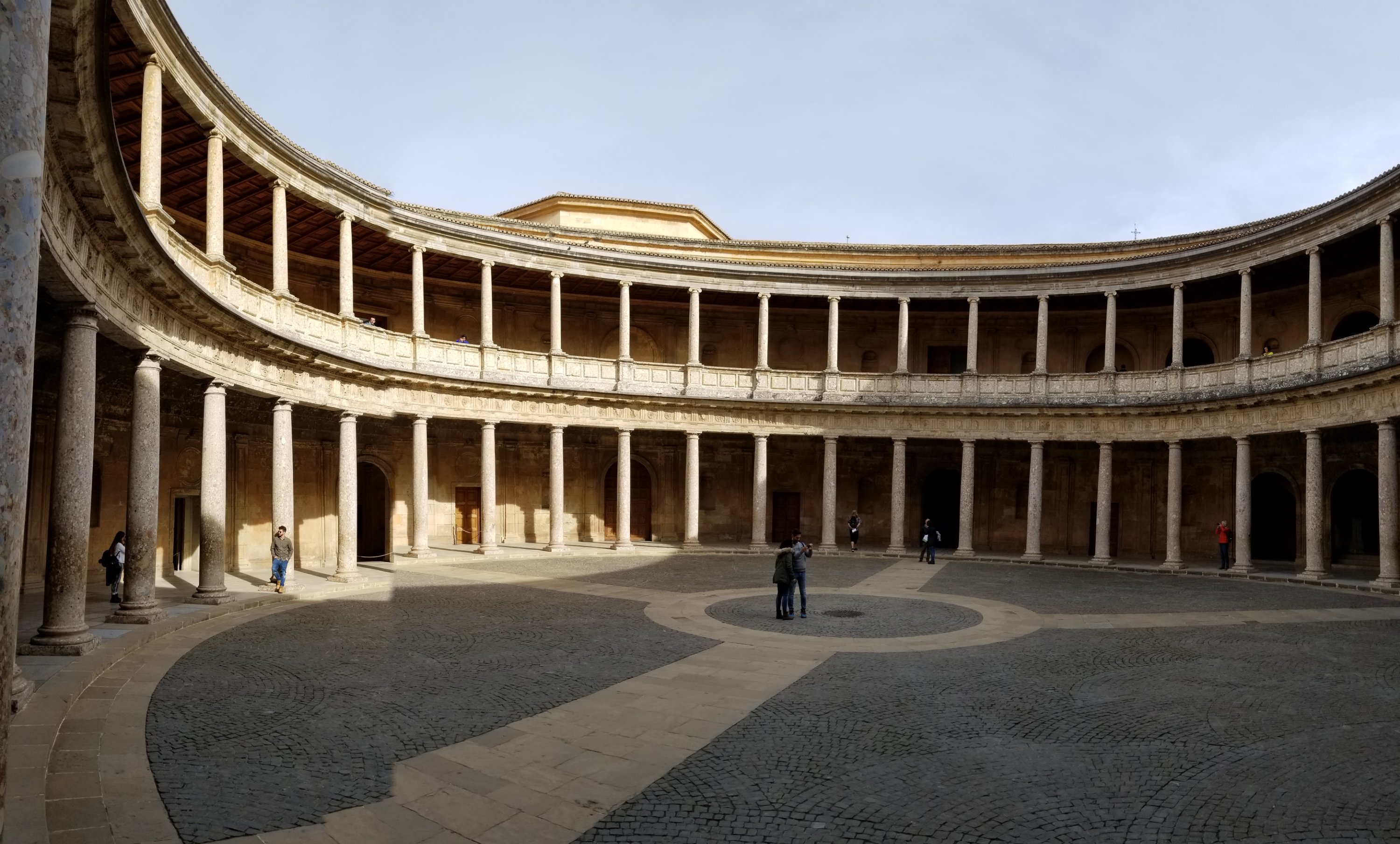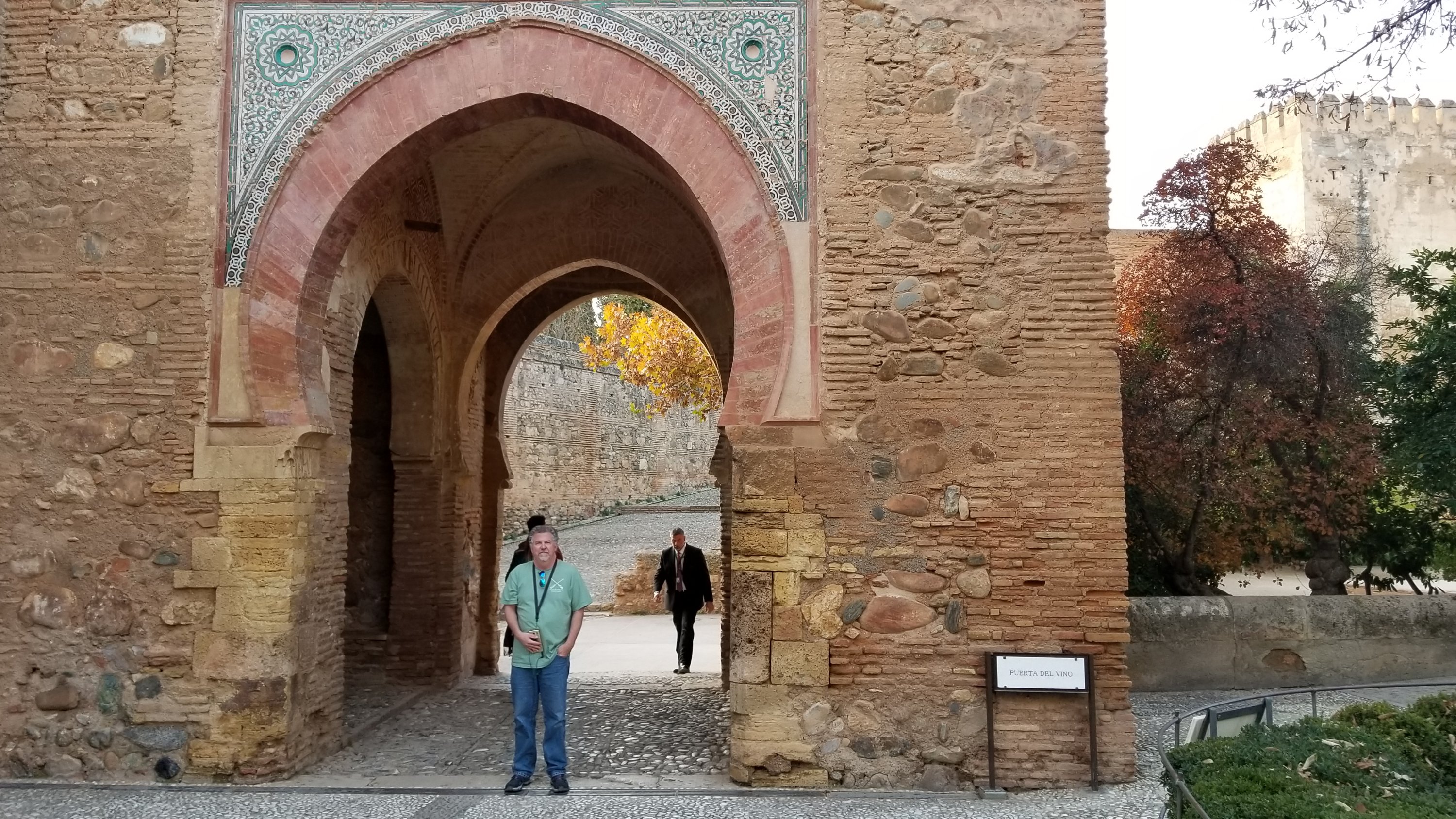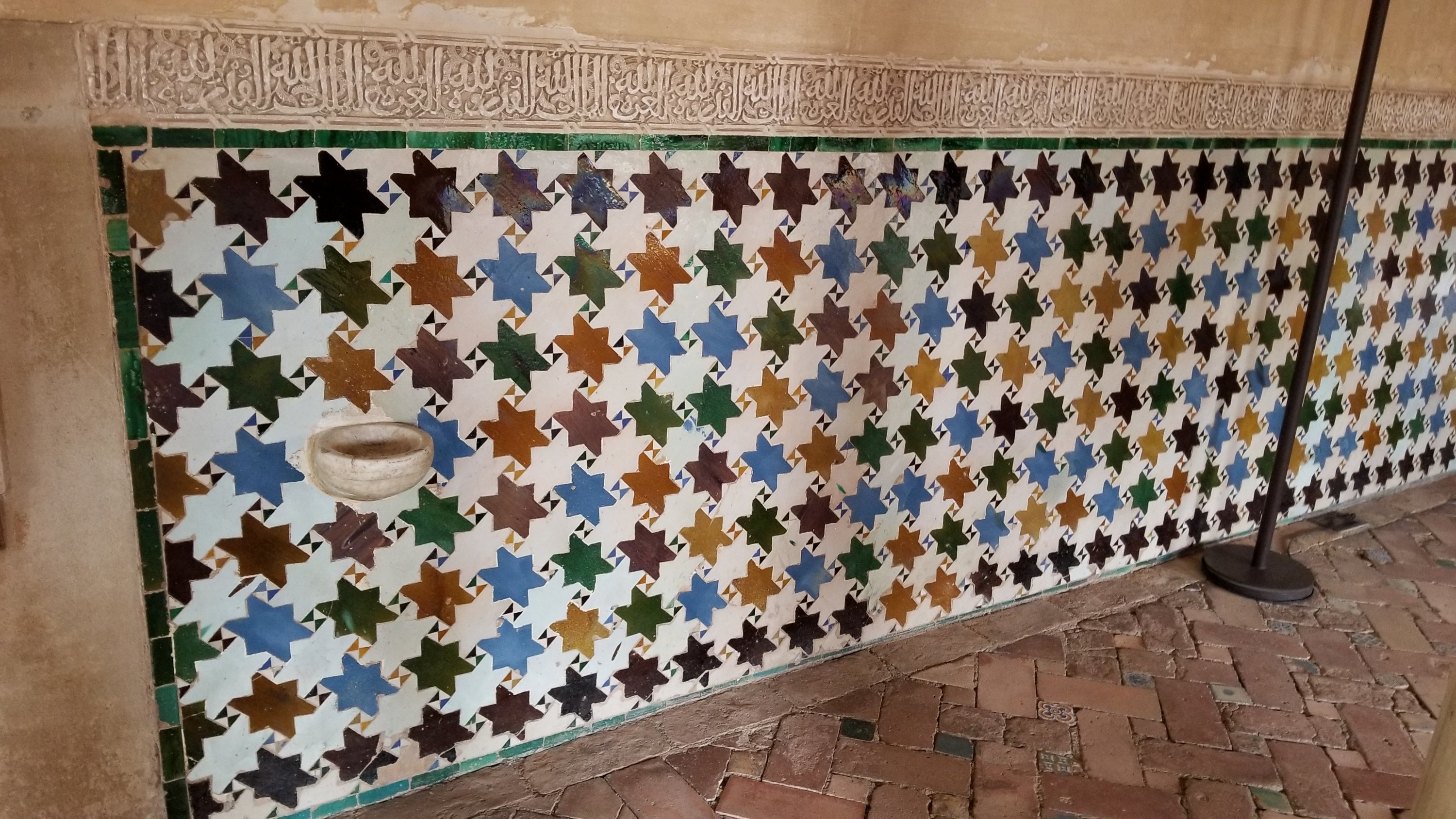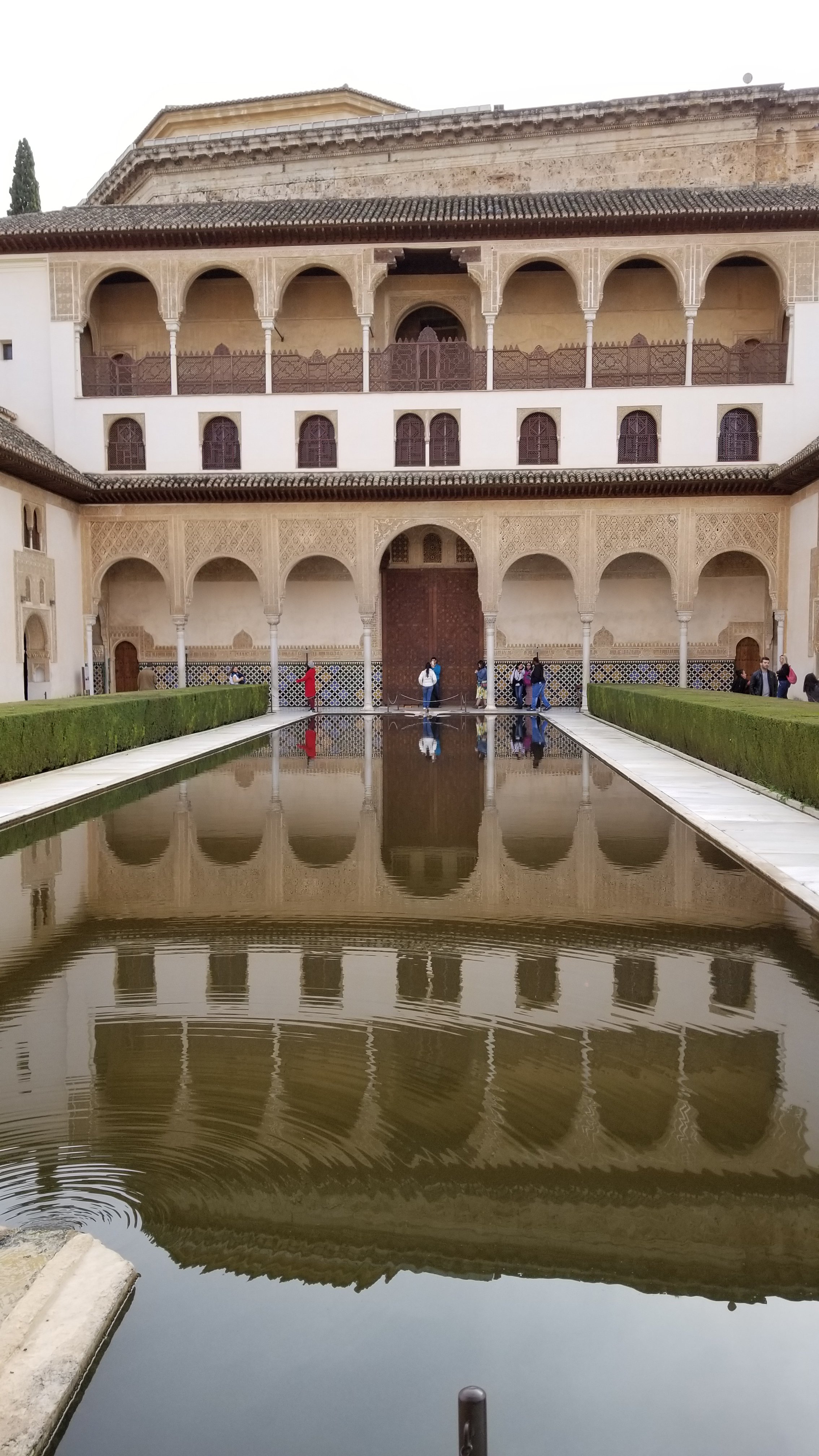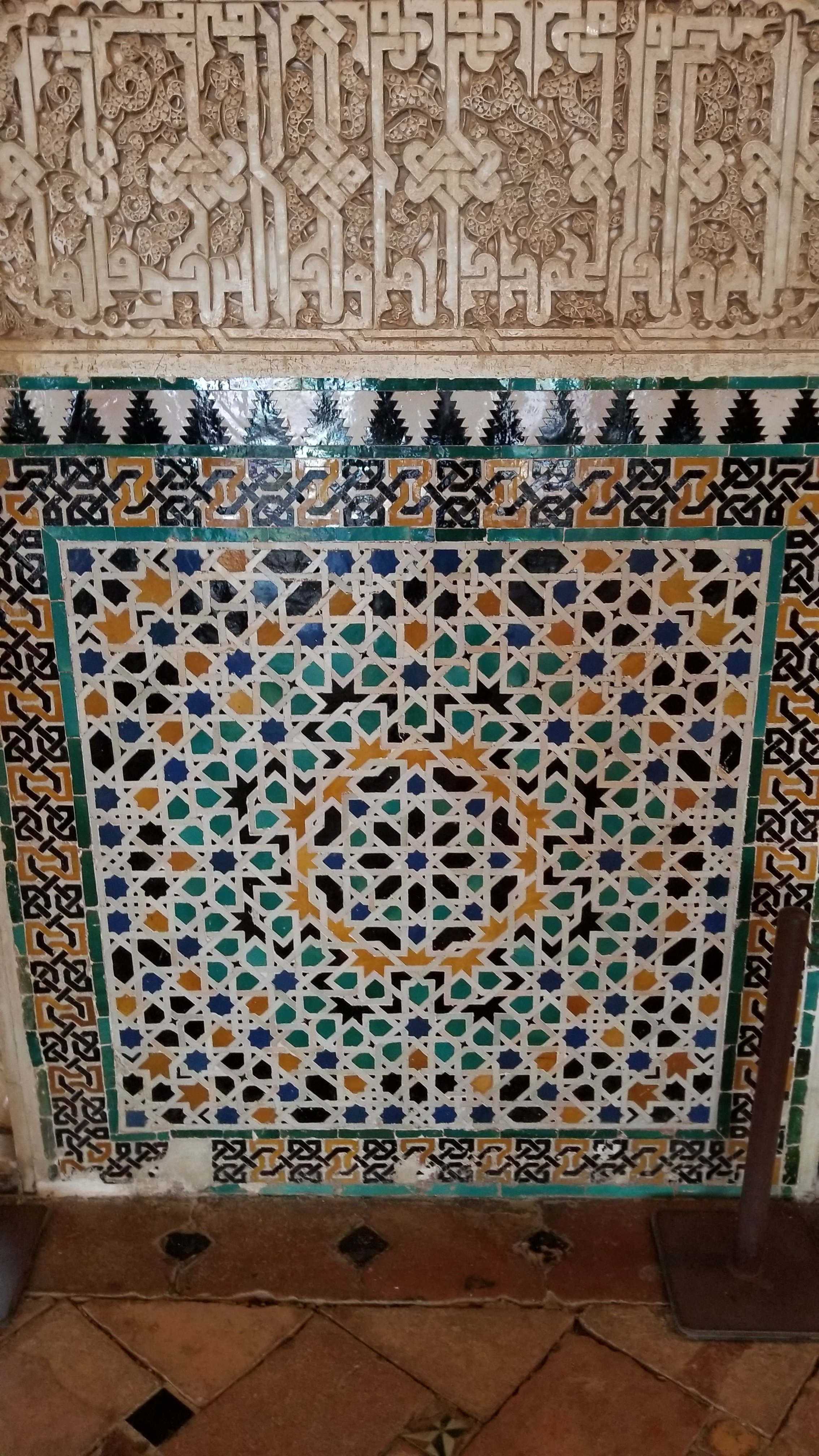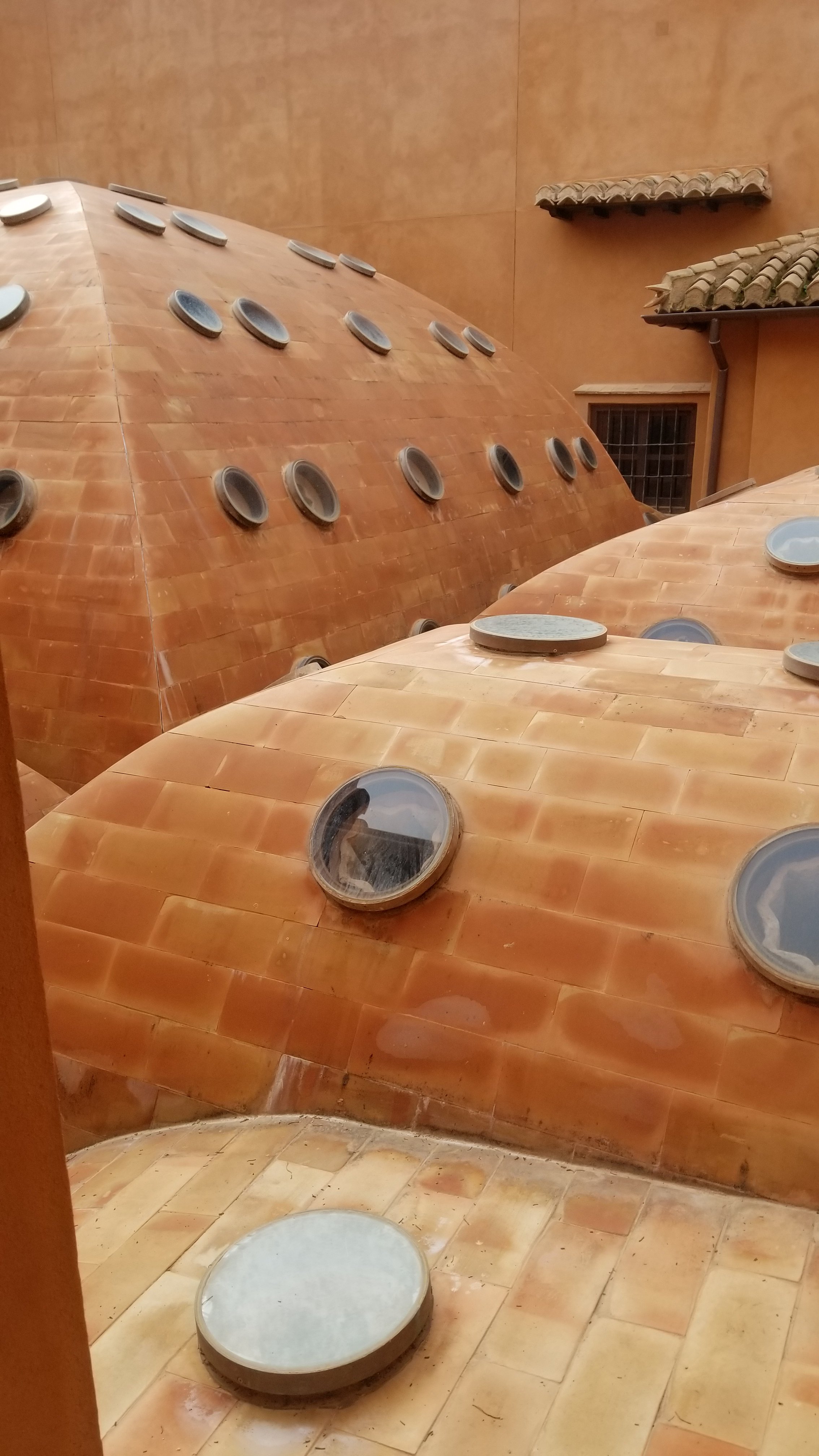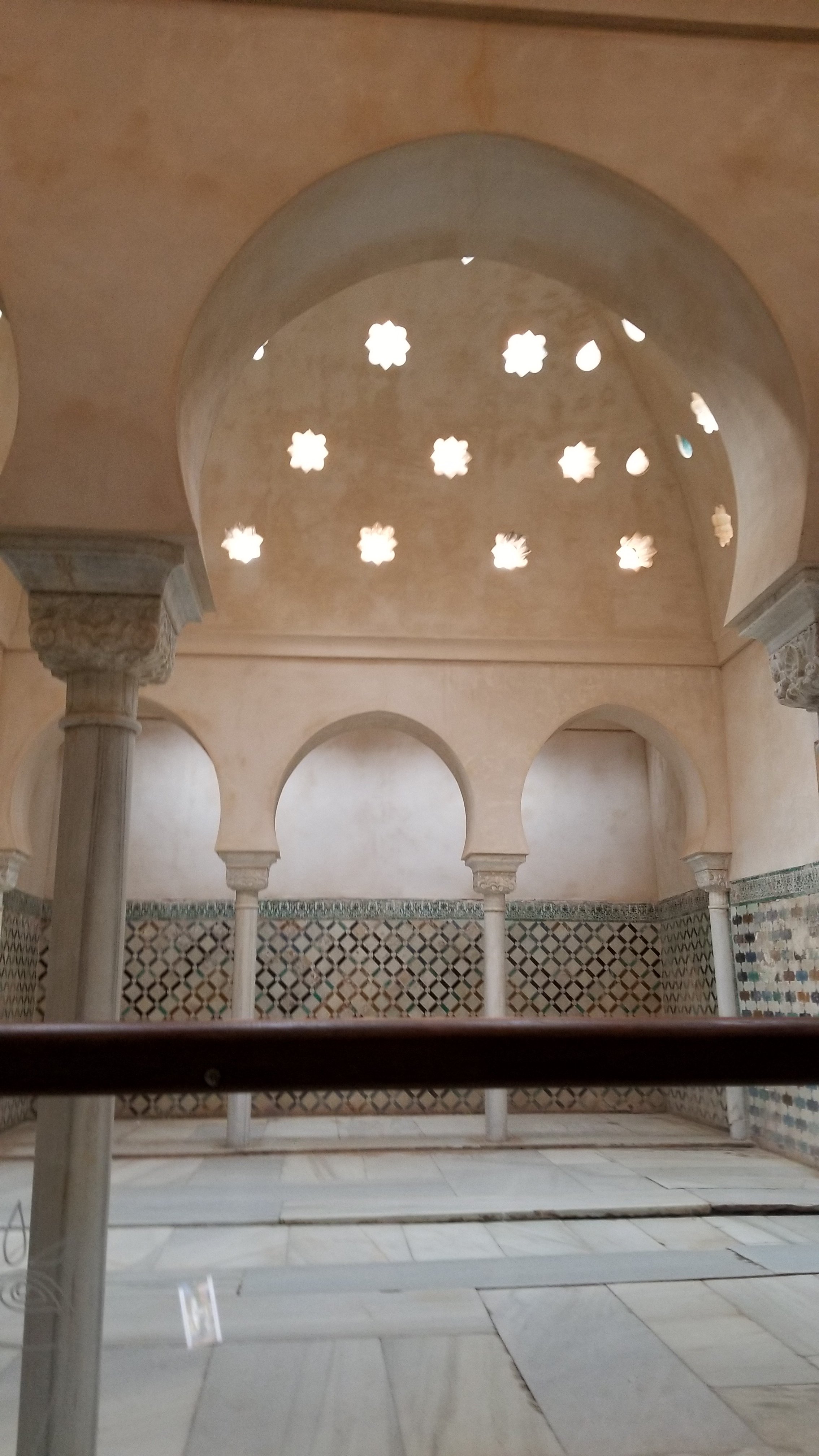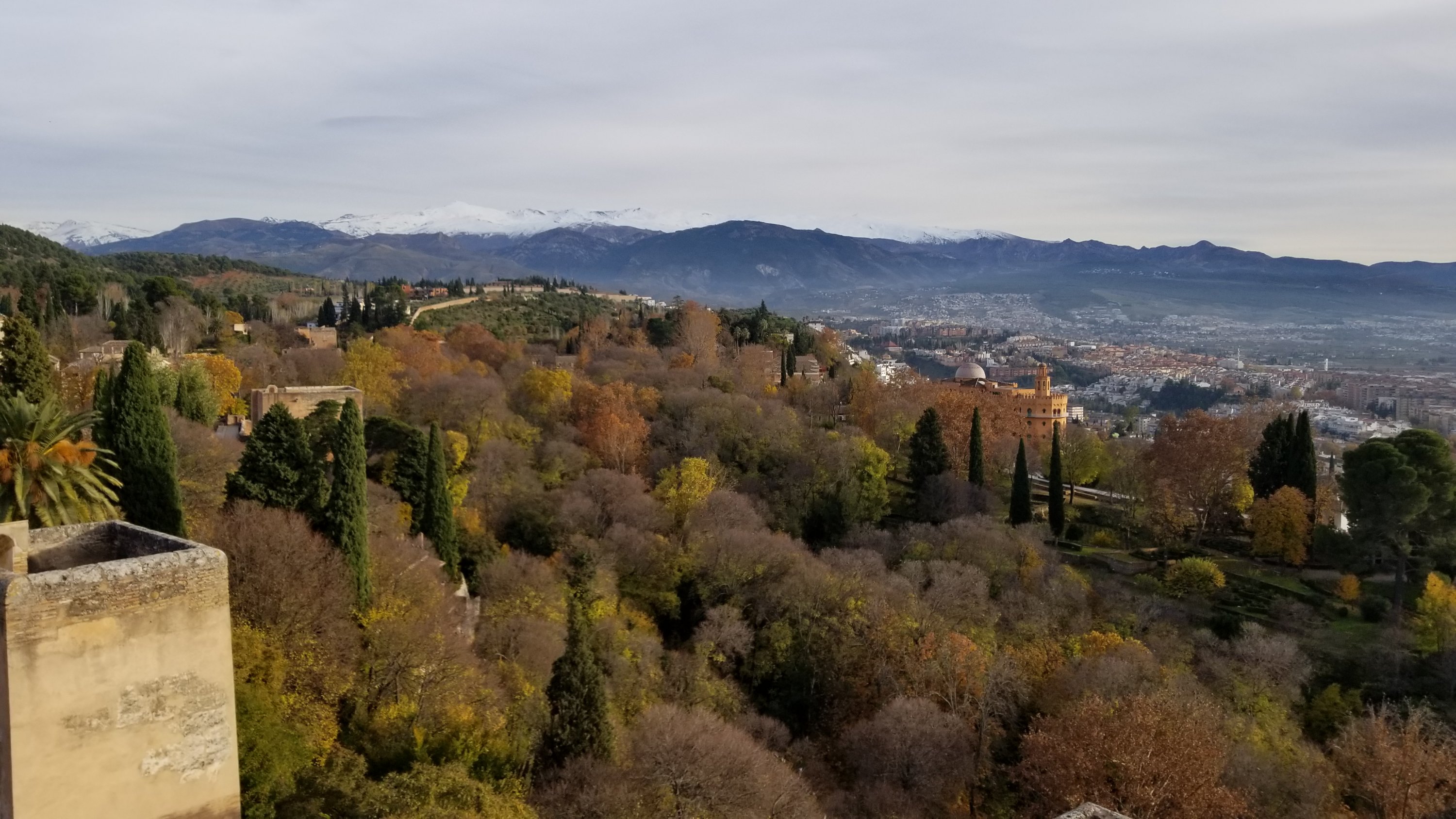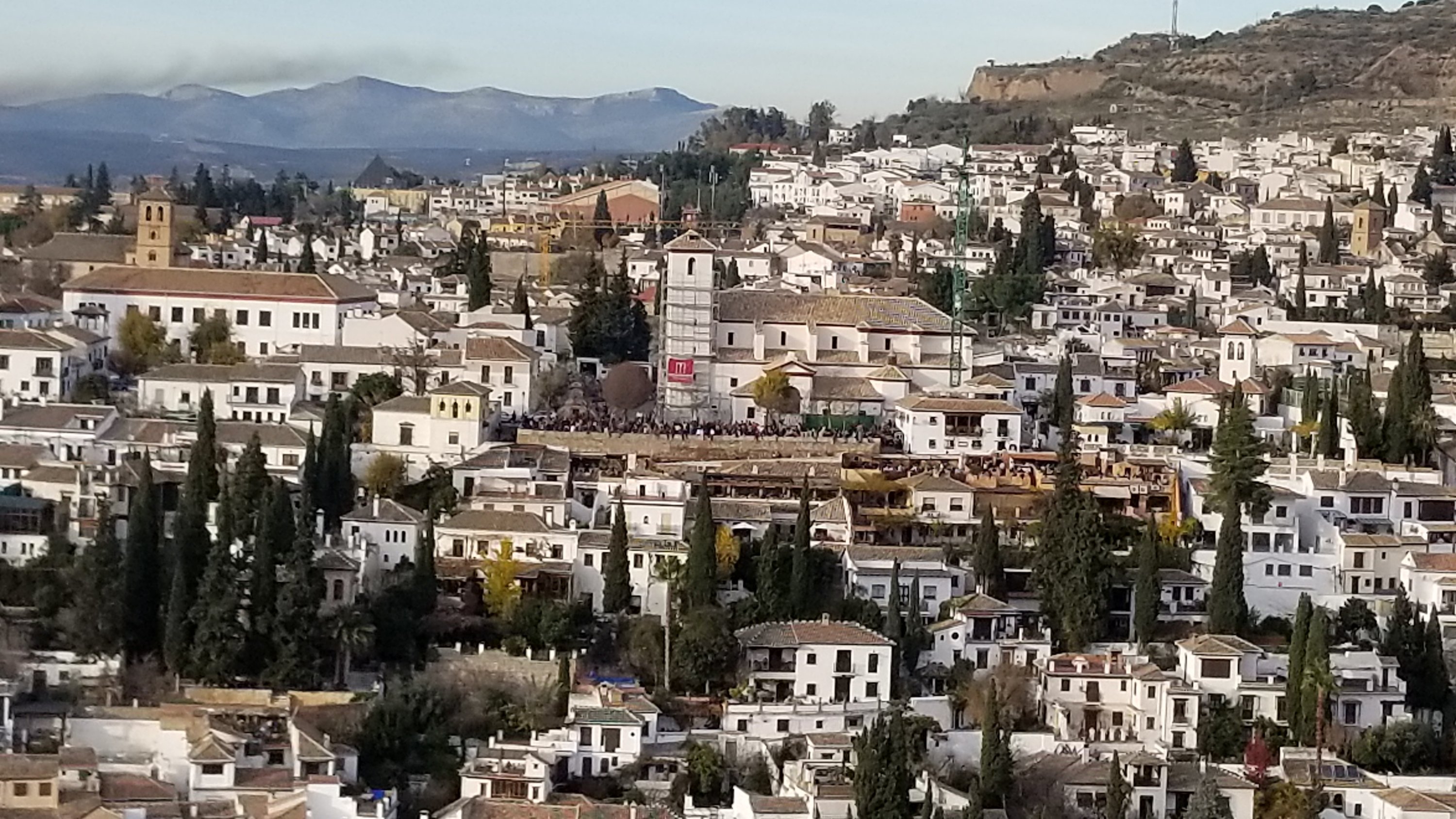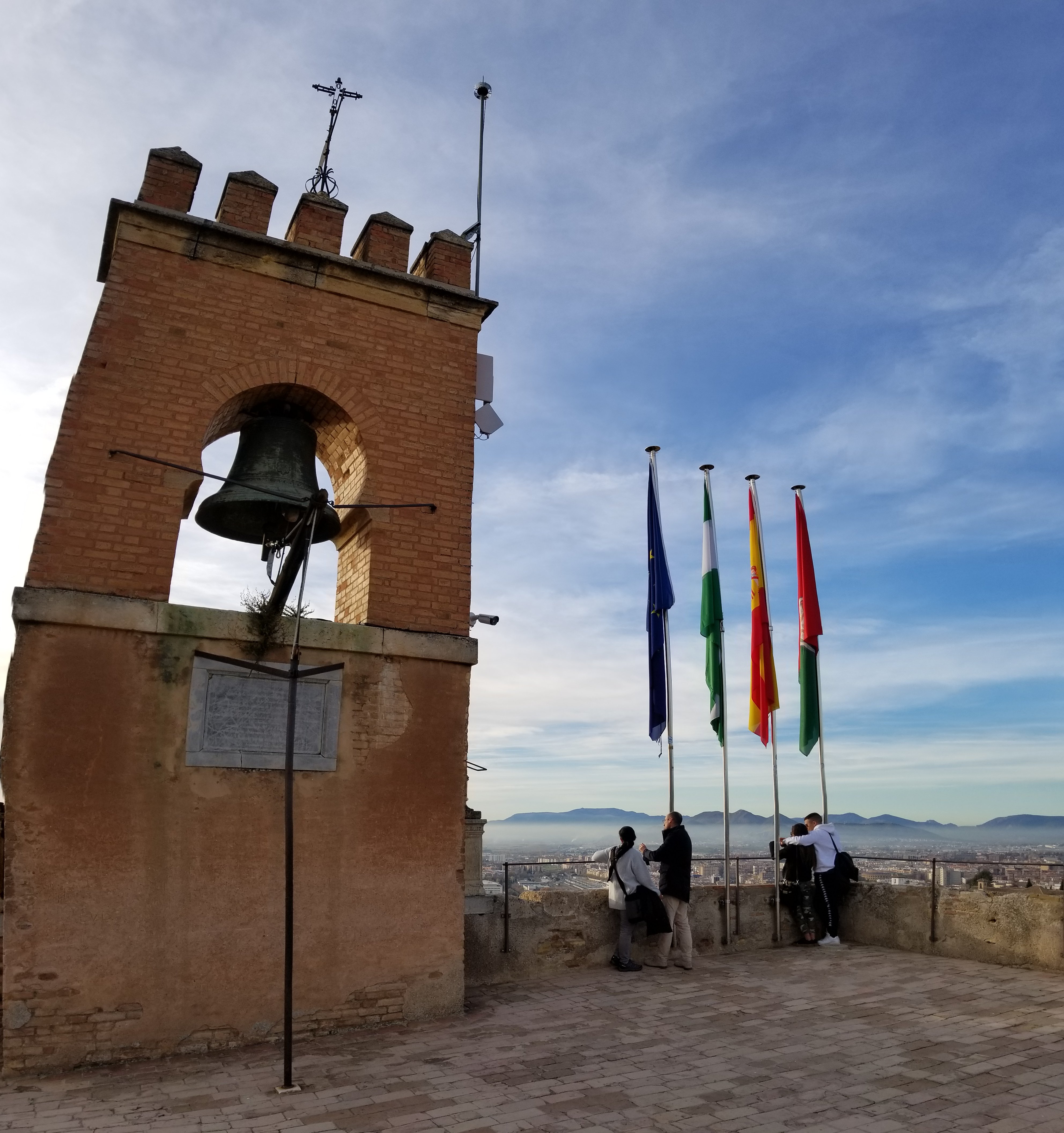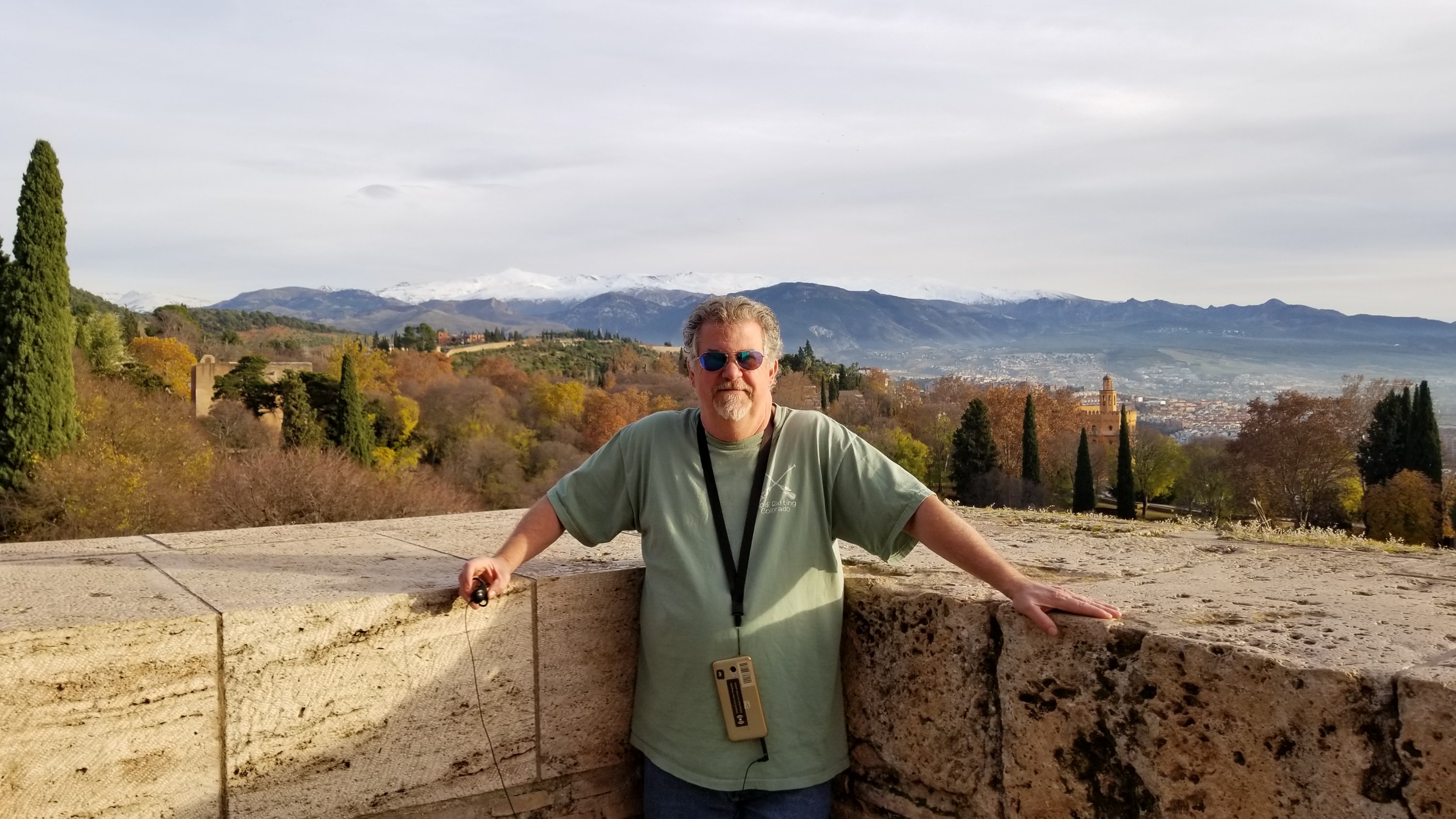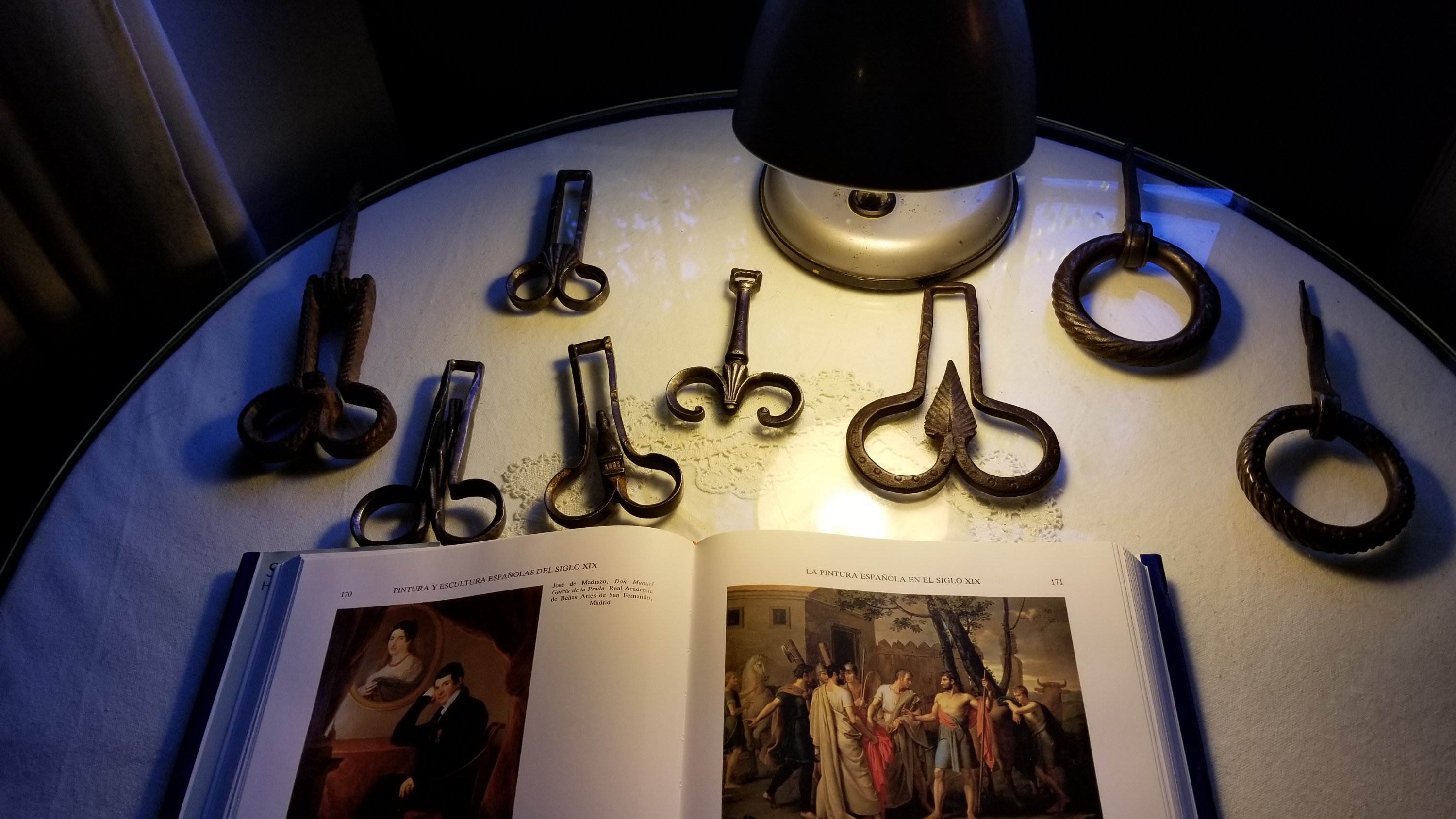Once again the GPS in the car led me into some pretty narrow streets. Turns out we were supposed to go directly to a public parking lot before heading to the hotel. Would have been nice to know that in advance!
Sunset from the roof of our very strange hotel.
The hotel is a converted house, and the shower is enclosed in a glass wall directly behind the bed. The toilet is in a little cave they have created that runs under a set of stairs in the common area of the hotel. Not the best choice we have made, but at least the bed isn’t hard as a rock. We needed the window open at night, and we had smokers and motorcycles going by right outside our window. Lovely smell of exhaust to wake up to!
The main thing to see here is the Mosque-Cathedral of Cordoba. What used to be the minaret of the mosque (erected in 951 AD) has been converted into a Christian bell tower. They originally built the first part of the bell tower right on top of the smallish minaret, which couldn’t support the weight. They then had to shore up the minaret to hold their Christain bells. I think it would have been easier to tear it down and start over, but that’s just me.
Here is the view of the Mosque-Catheral (yes, it’s both in one) from the top of the bell tower. The tower in the middle is the transept. It’s like having a Catholic church in the middle of a Muslim mosque.
A view of the historic section of Cordoba.
Here is a view of the bell tower from the courtyard orange grove. There are orange trees everywhere in Spain, but I think Cordoba takes the cake in how many there are per acre…all of them filled with oranges. One item you never need to go to the store for around here.
The original mosque was built in 786-788. Unusual to this mosque is that the qibla wall, which is supposed to be facing east towards Mecca, was instead facing south. The mosque was enlarged in 833-848, and then again in 962-966, when they added the ornate Mihrab.
Here is the Mihrab, which is intended to show the direction of prayer, even though this one faces south from the prayer area.
The final enlargement was in 991, basically doubling the size, and this place is big!
When Cordoba was reconquered by the Catholics in 1236, they added a bunch of Catholic stuff….hell….I started losing track….but they did put in the previously mentioned transept that was pretty incredible. I couldn’t take a photo to do it justice, but here is one from google.
Here is the pipe organ, and there was one on each side. Early stereo!
The Catholics built these very dark wooden spaces for the choir. Each choir spot had it’s own little detail work depicting some saint or other important biblical figure. Beside each and every one (I walked around and checked), there is a depiction of some guy getting killed with a knife or a sword. WTF?
They had some ruins they pulled up while doing renovation work, and they had them on display. Remember that Visigoth symbol that was a part of a cathedral way back in Lisbon? They found the same symbol here.
They also found the remains of the Visigoth Basilica of San Vicente, which dates back to the 6th Century, that the Moors basically built right over once they took control. You can look down into this site through a glass floor.
Very close to the Mosque-Cathedral is the Roman Bridge, originally built in the 1st century BC. It’s been restored and renovated several times, but hey, at least the Romans started it! They have quite the preoccupation with the fact Romans were here.
There are some beautiful spots to be seen while walking around Cordoba.
So about that preoccupation with the Romans, when they do any sort of construction in Cordoba, they can’t disturb anything that might possibly be Roman, and once confirmed, they must work around it and make it available for public viewing. Here are some ruins that were in the floor of two restaurants that we ate in.
Thank goodness the Romans never visited California. Can you imagine the rules there?
Off to Cuenca!

